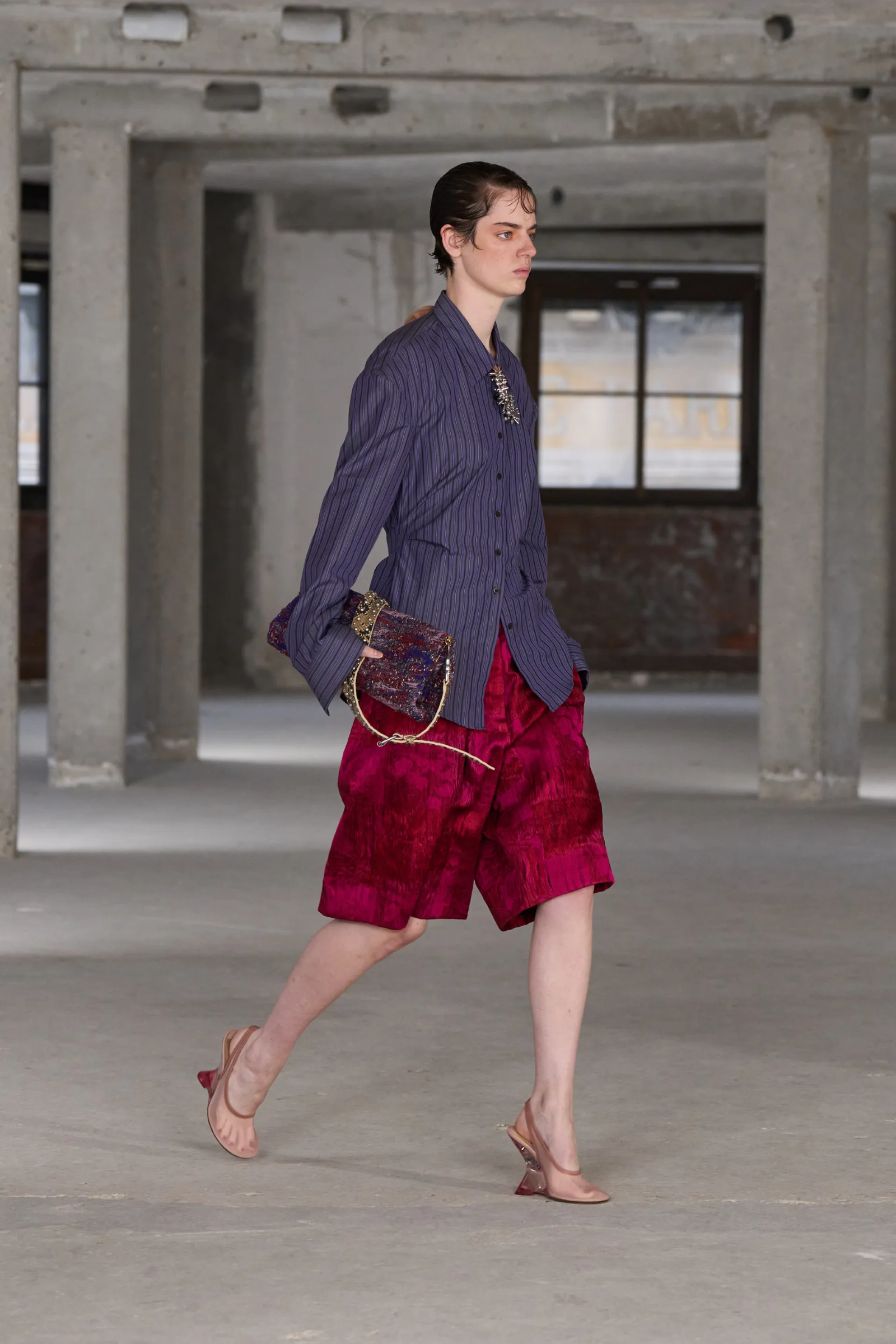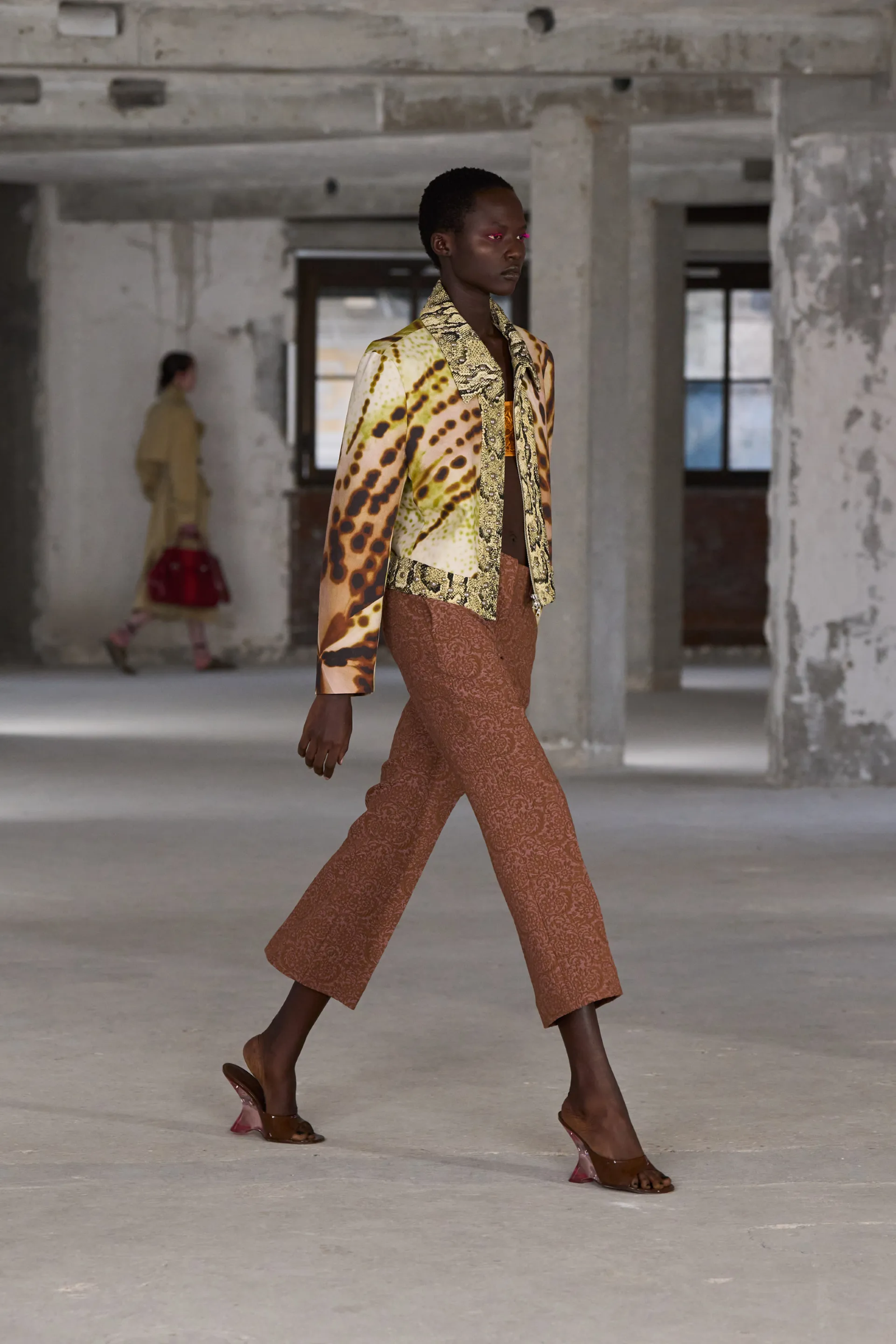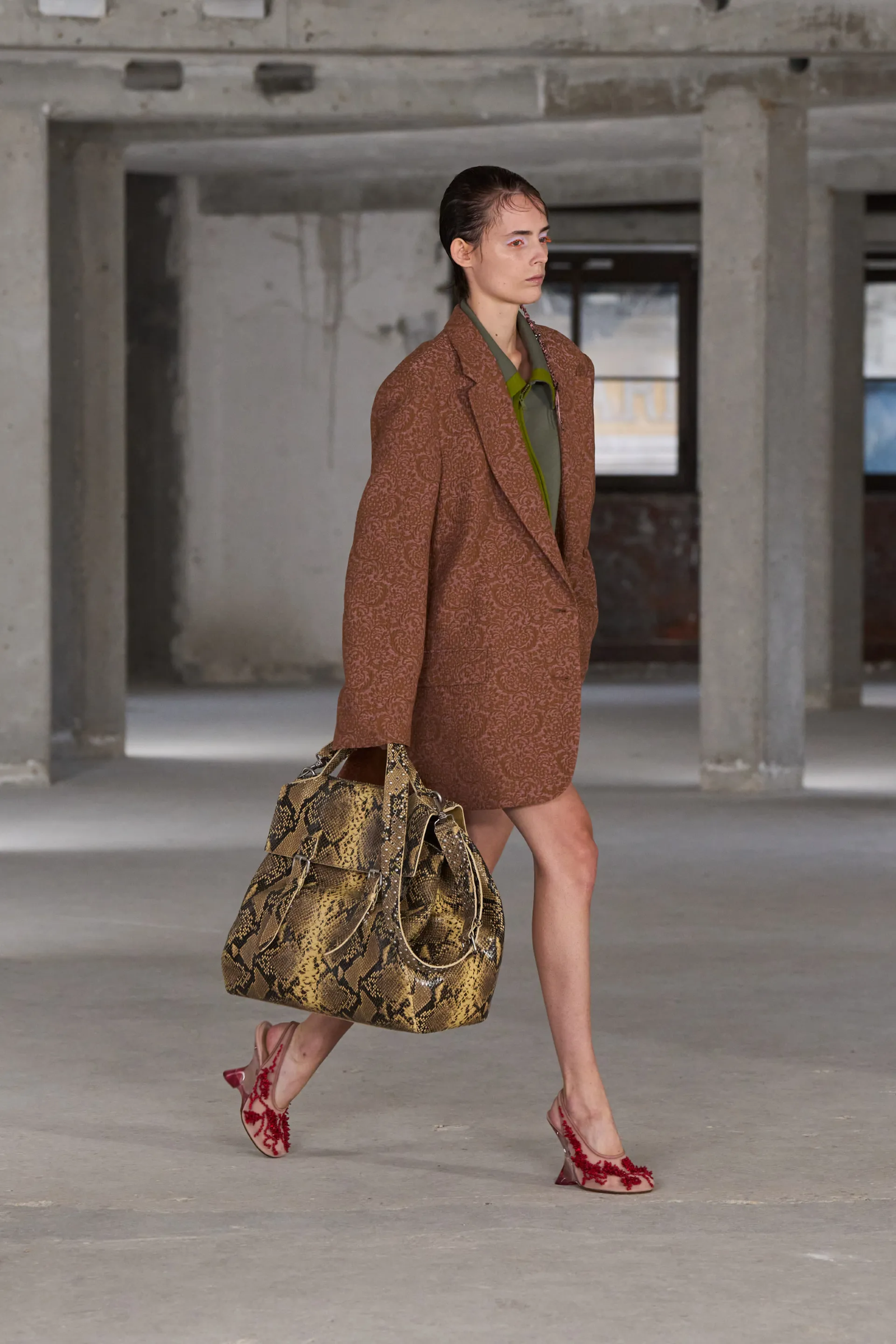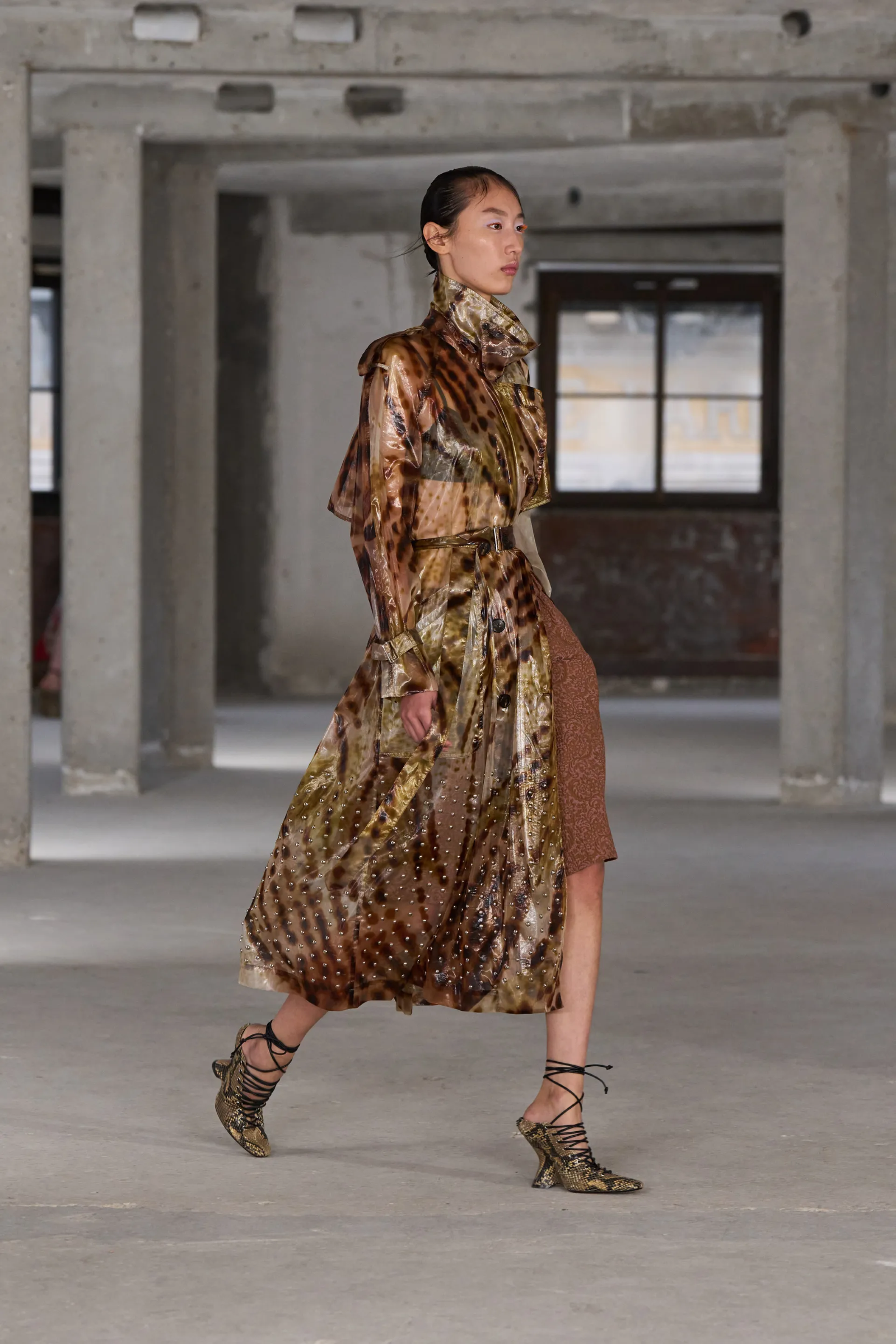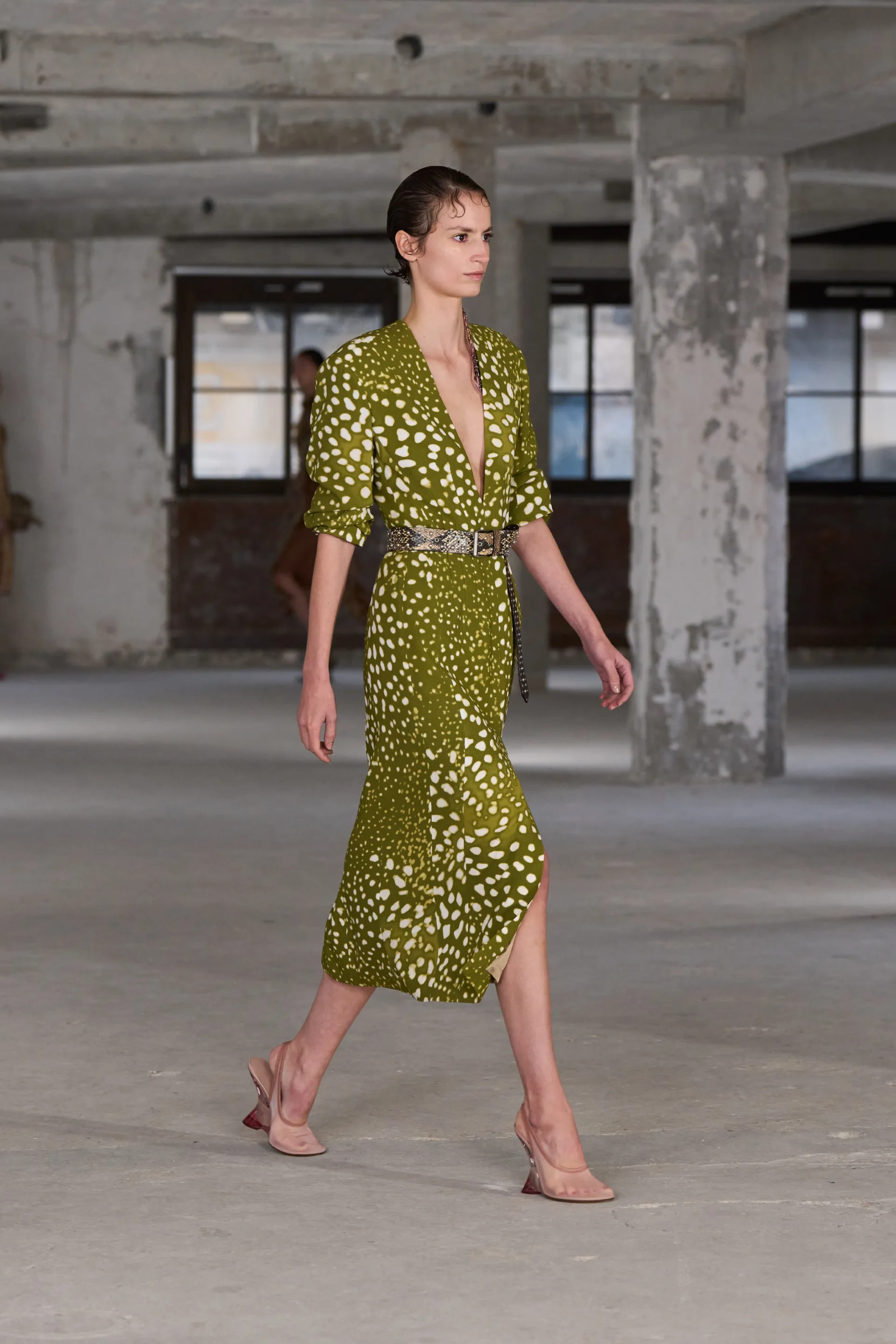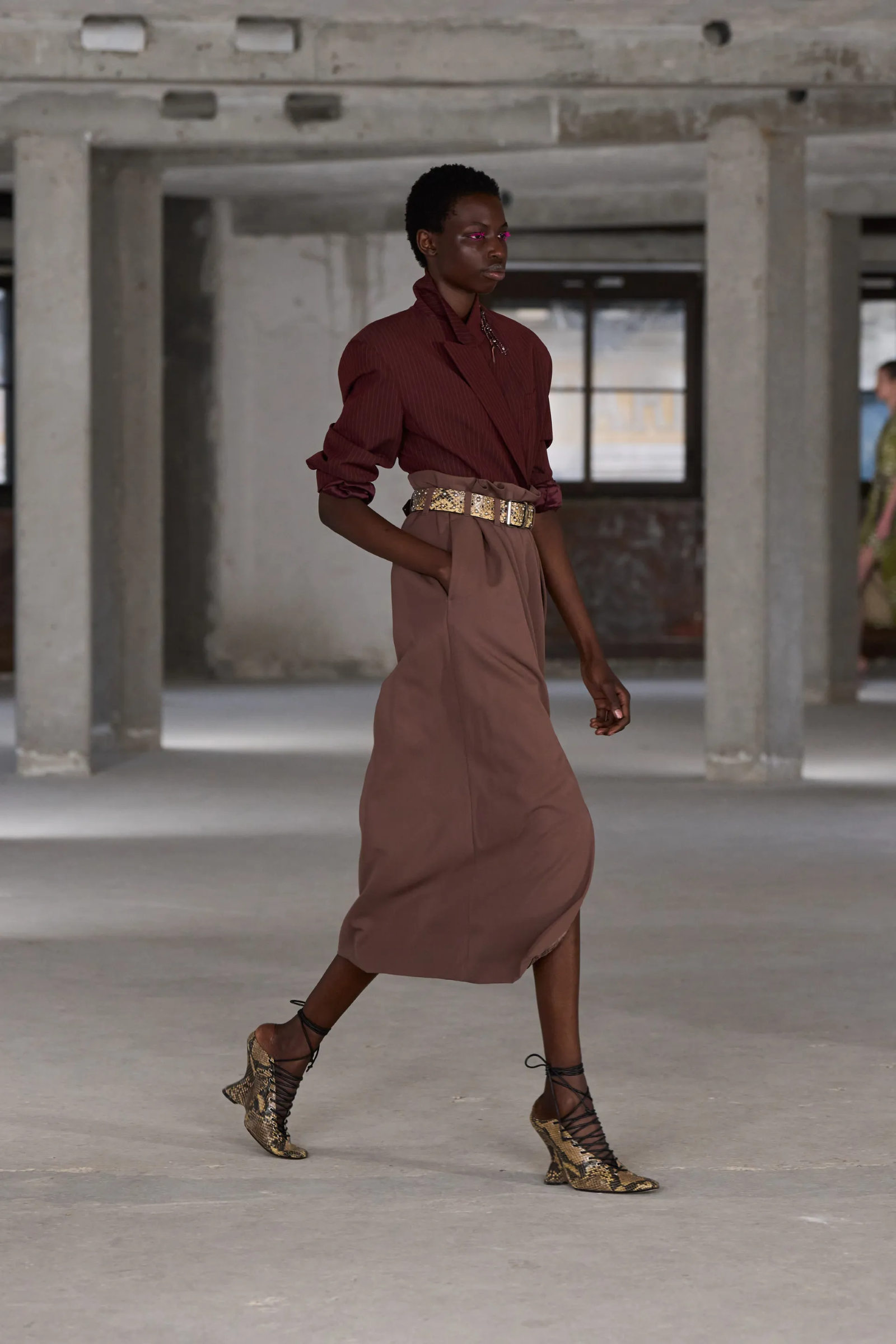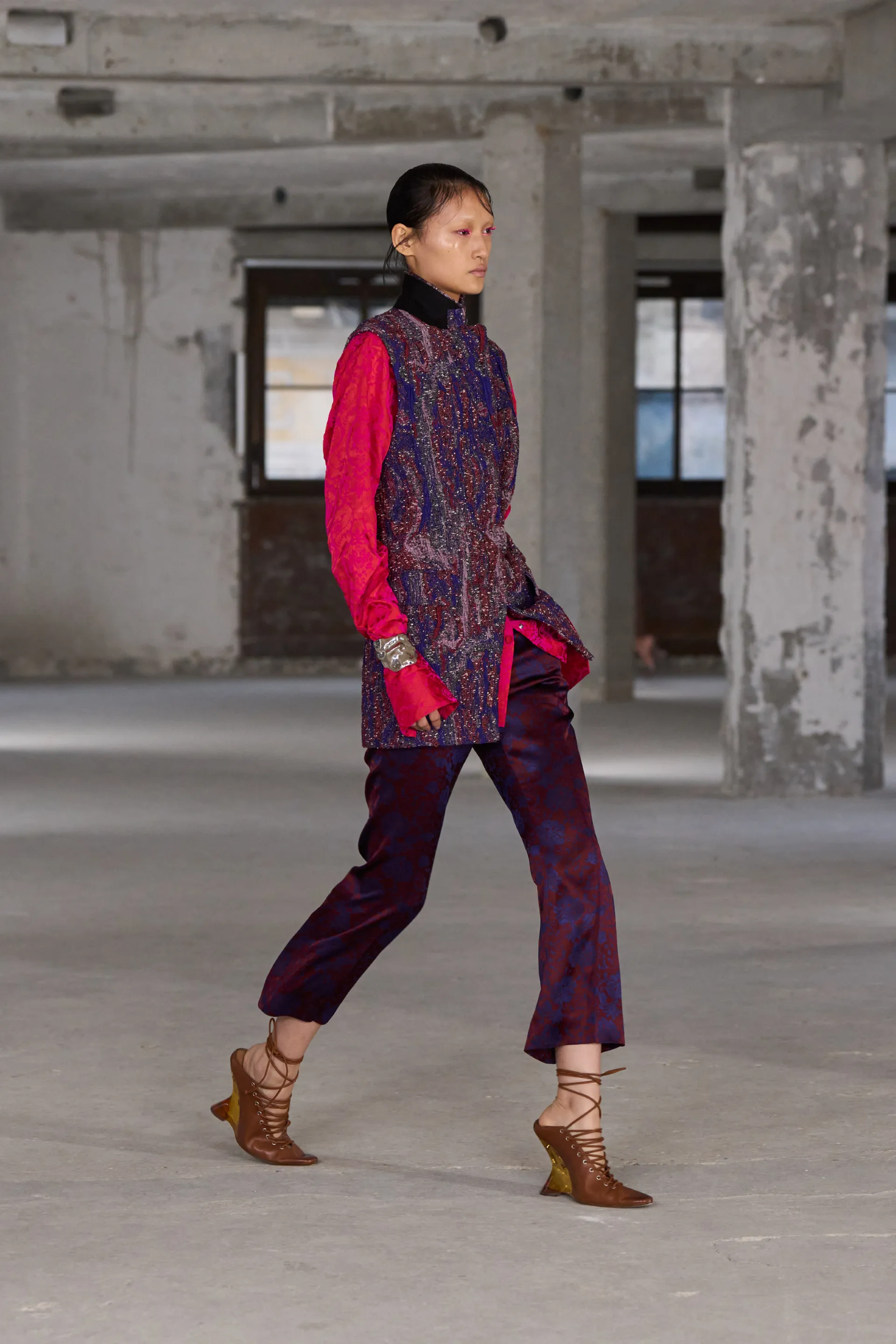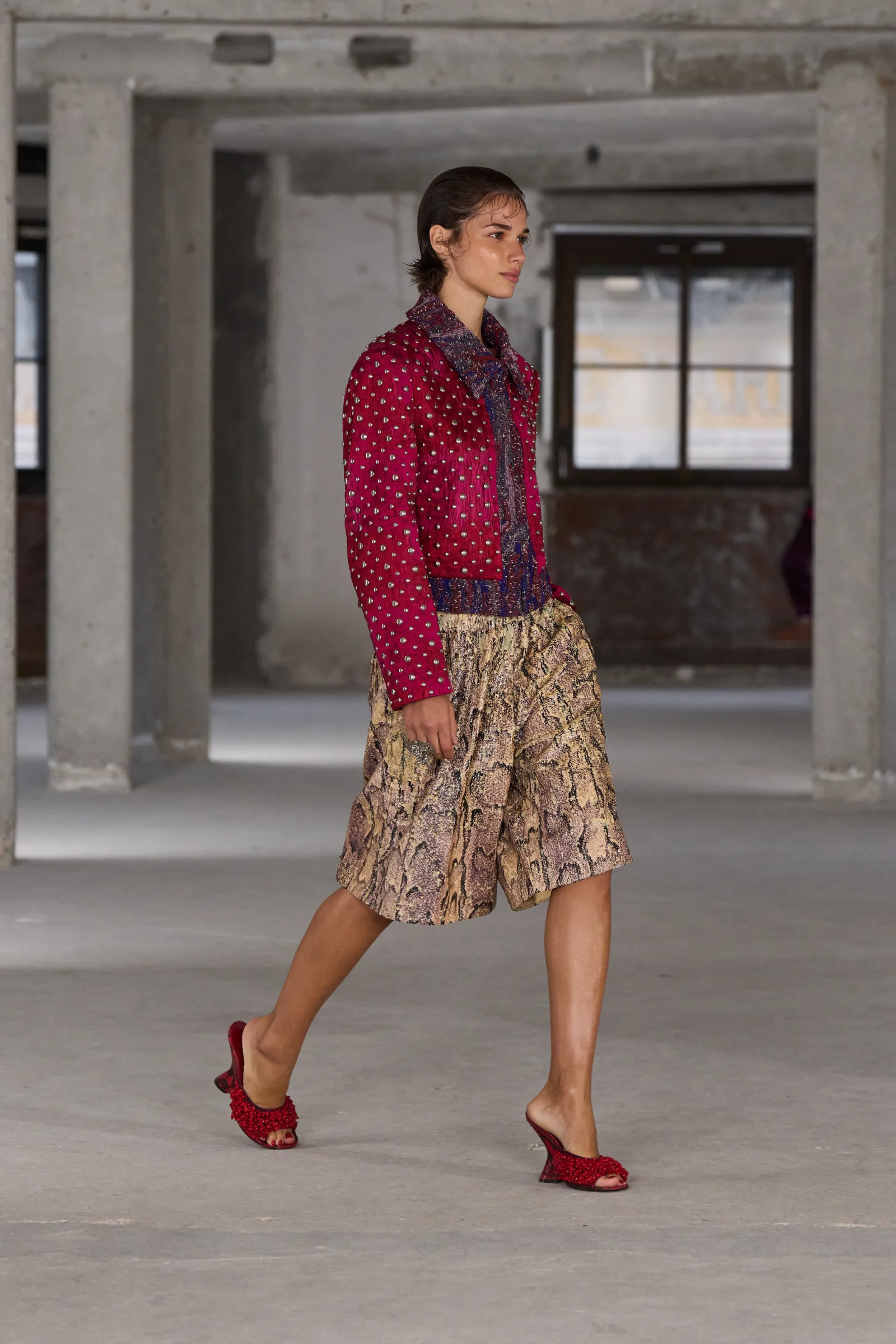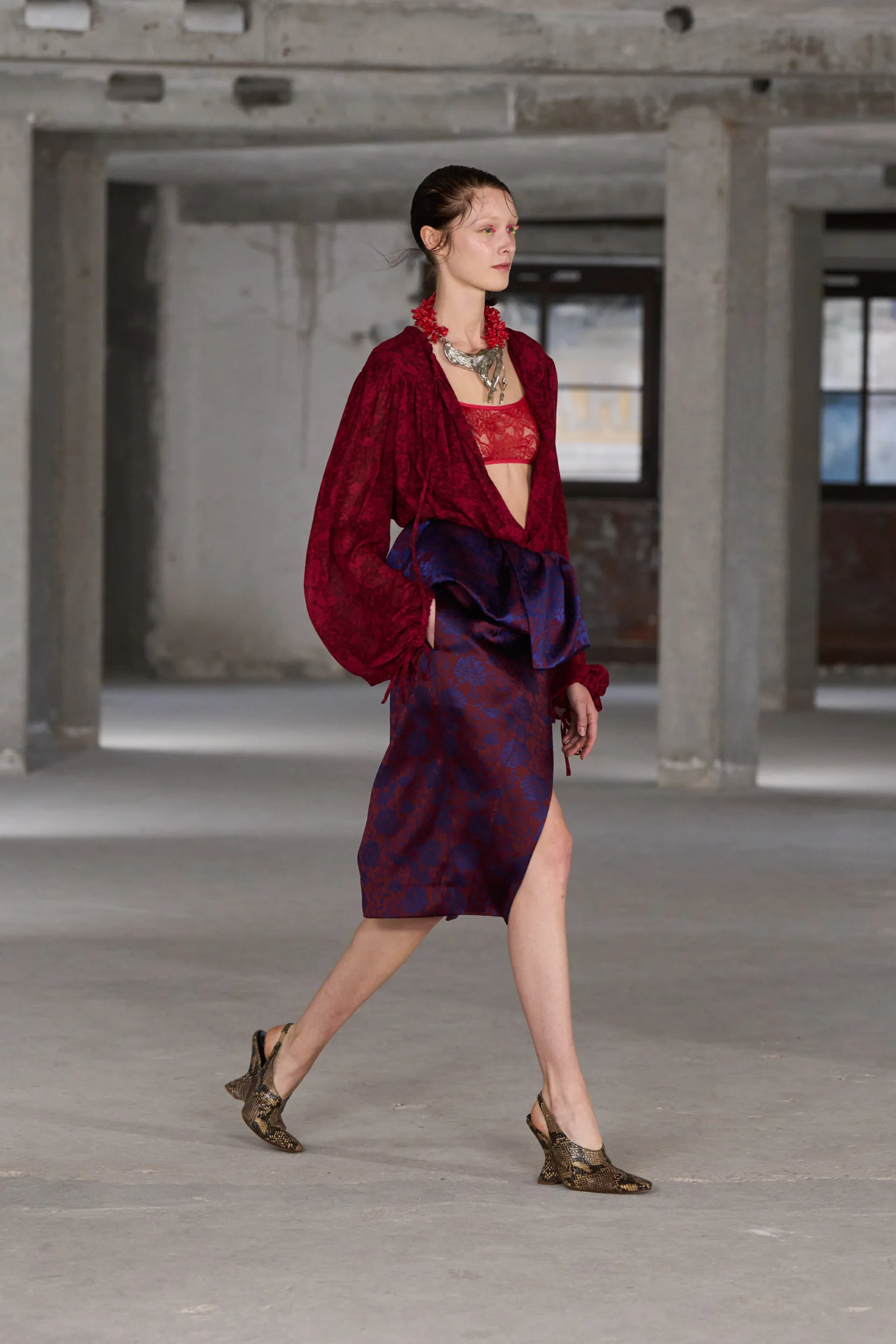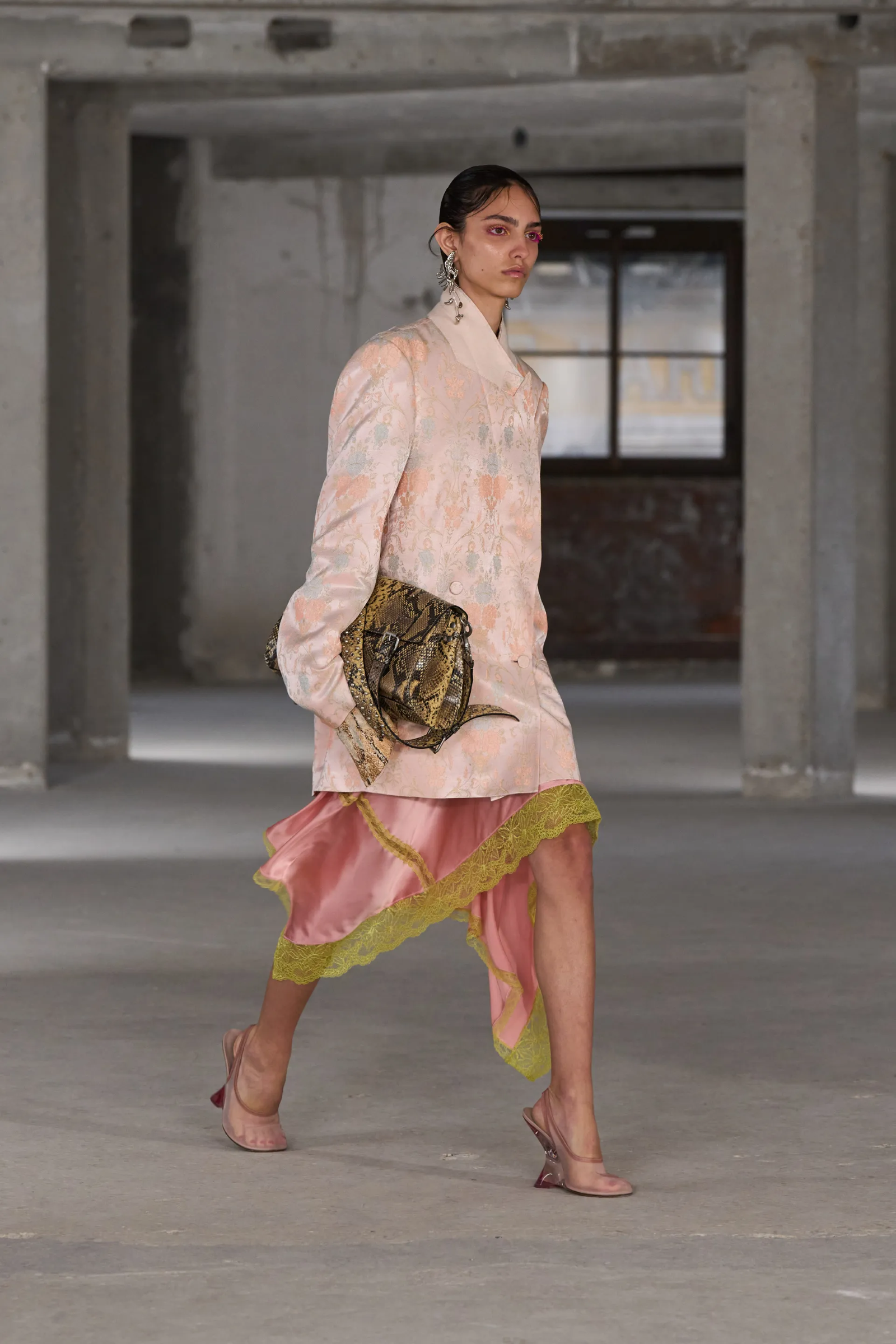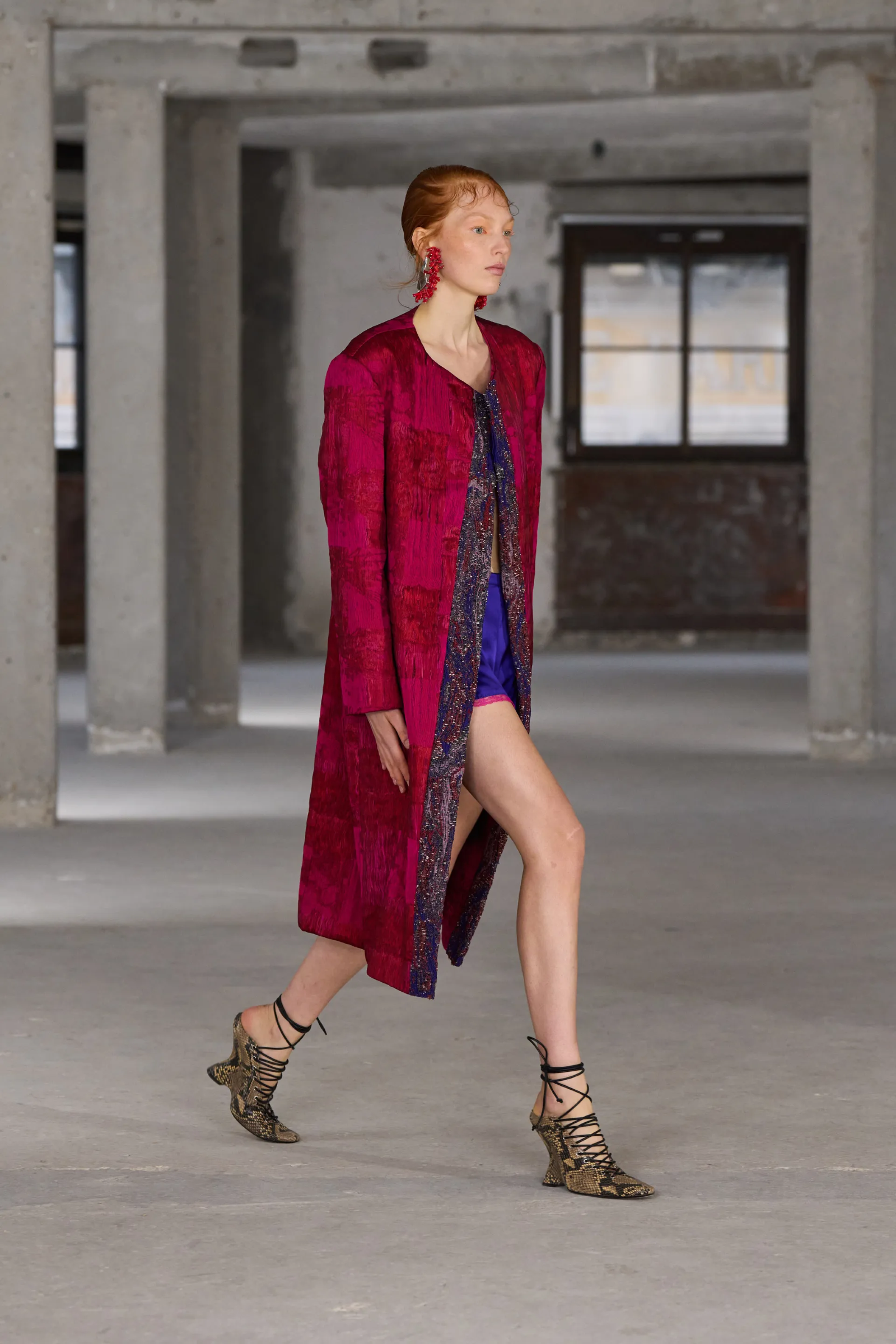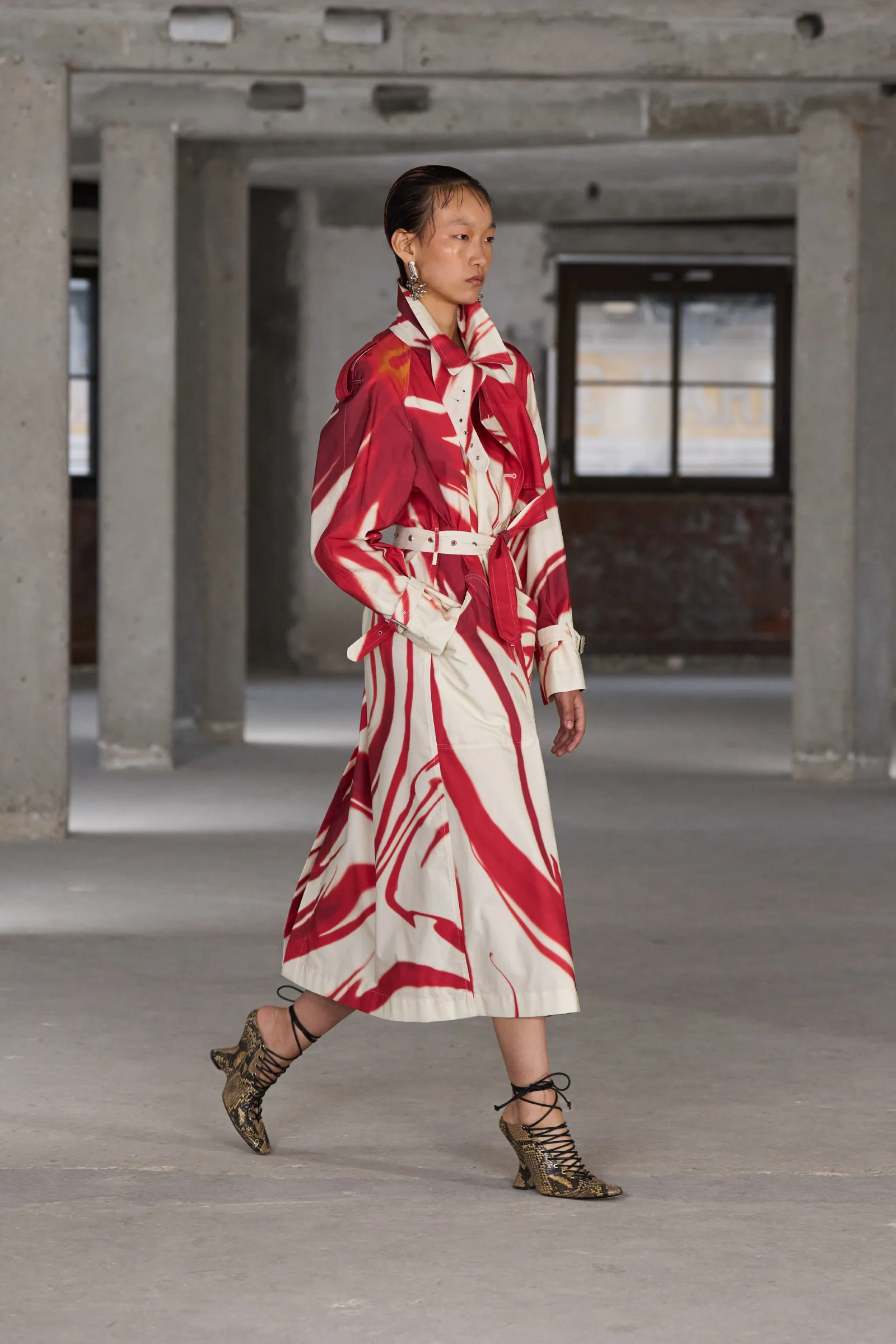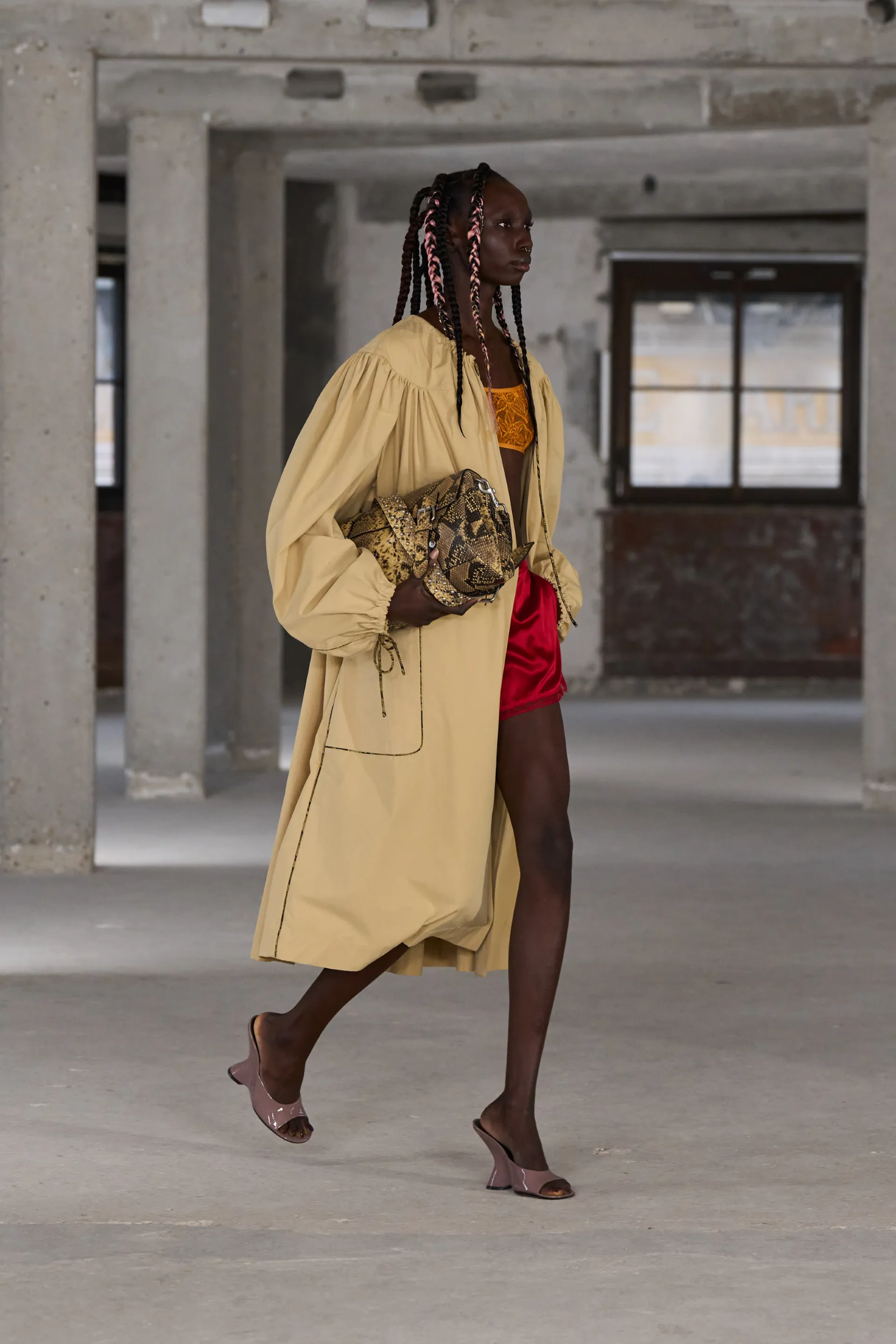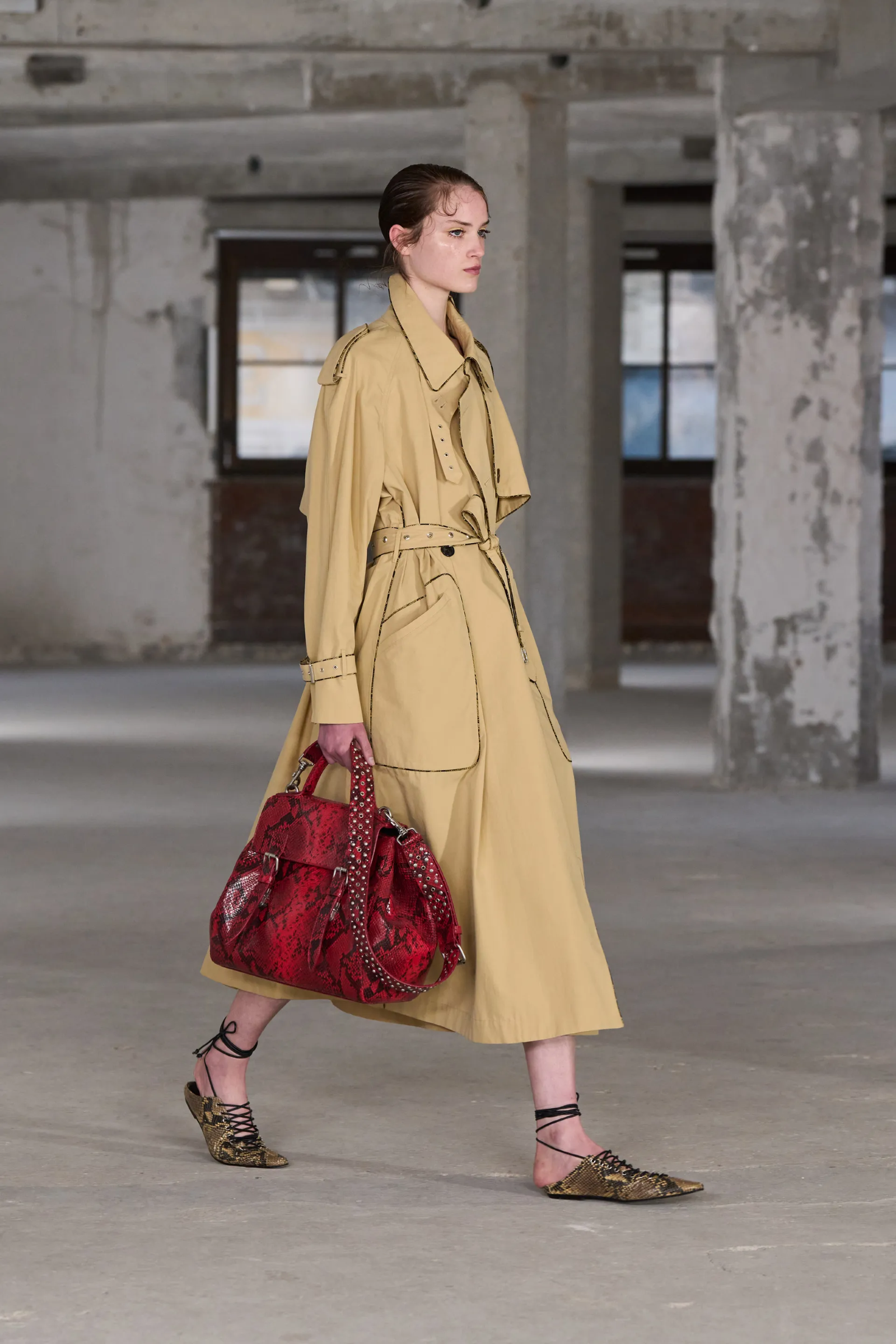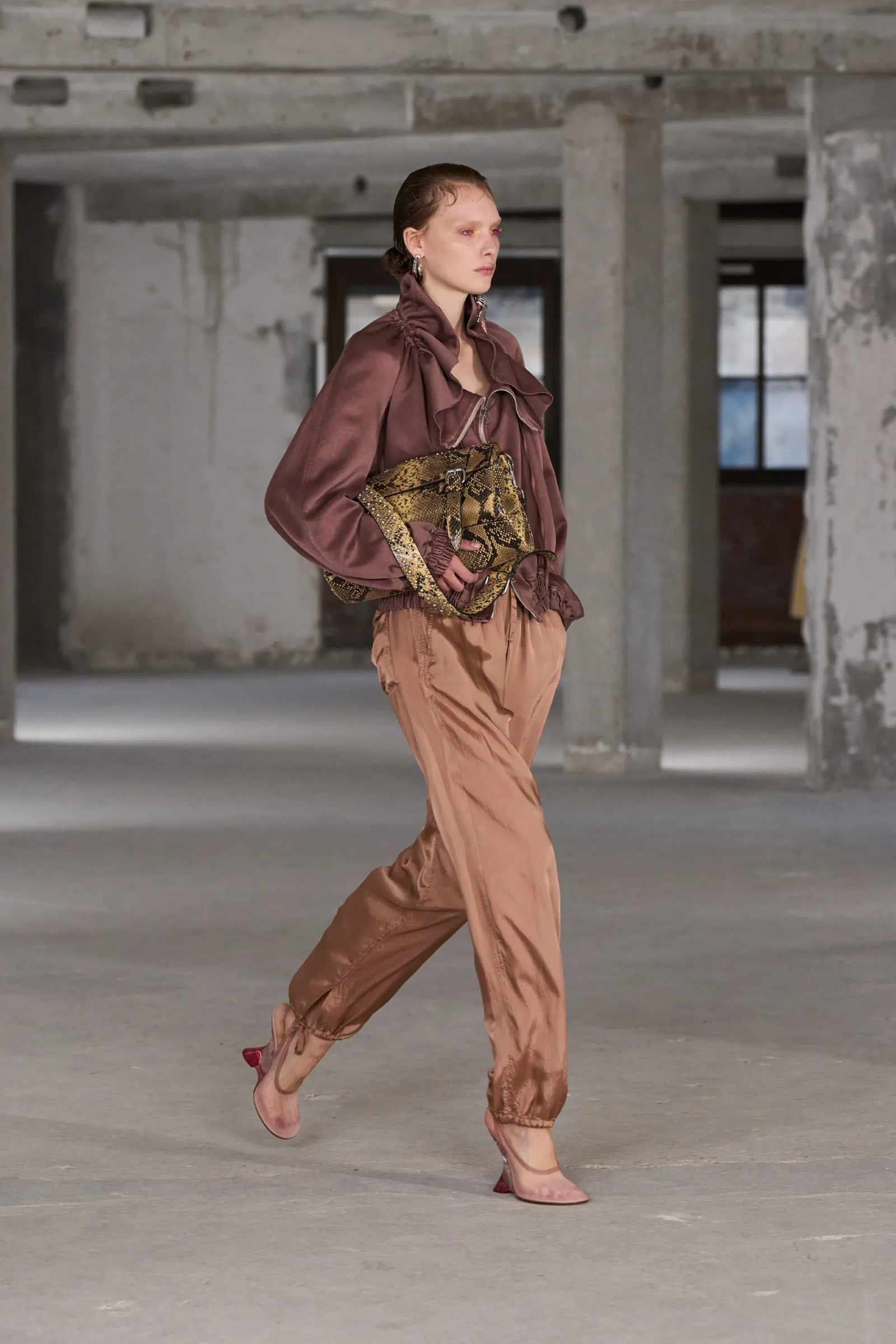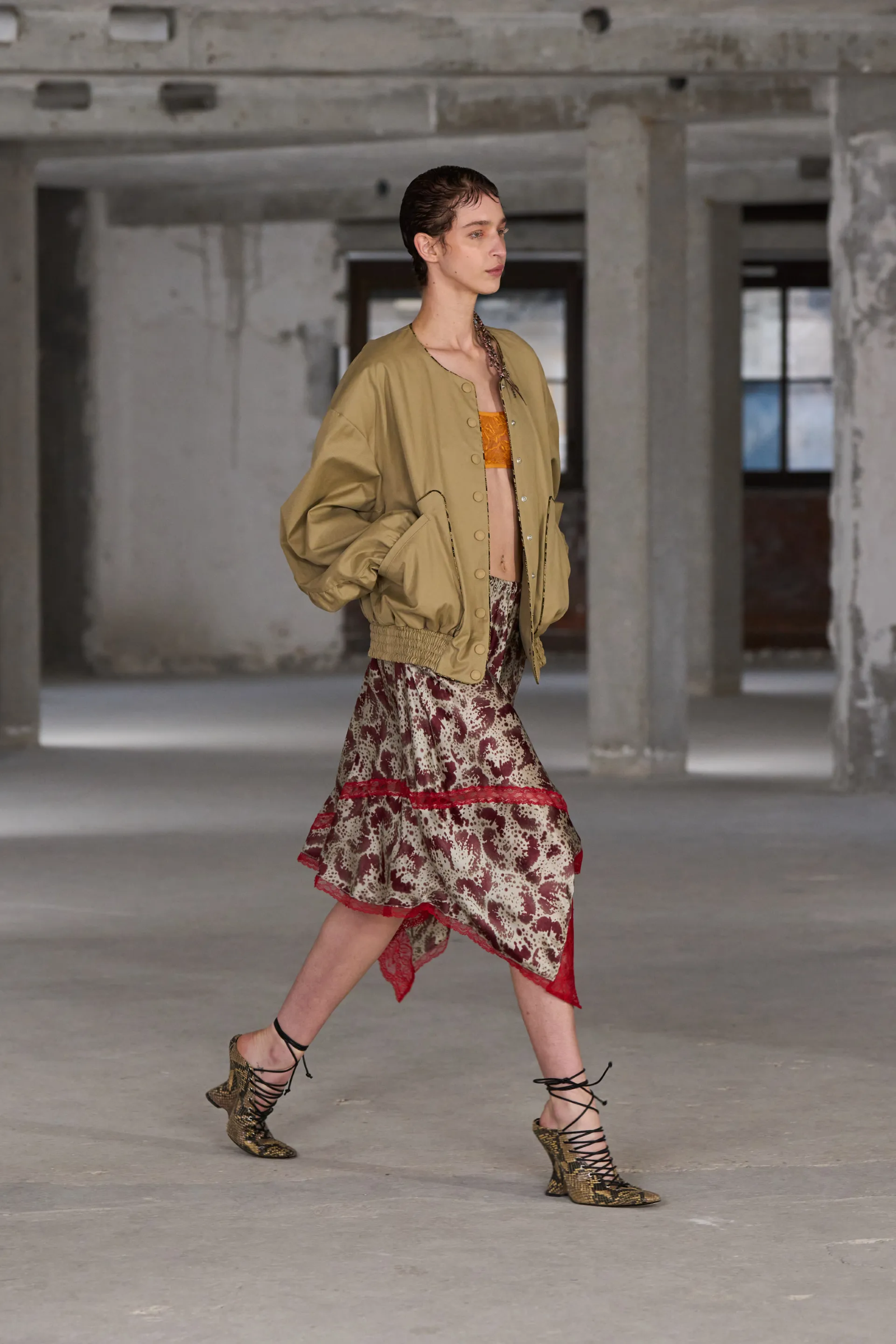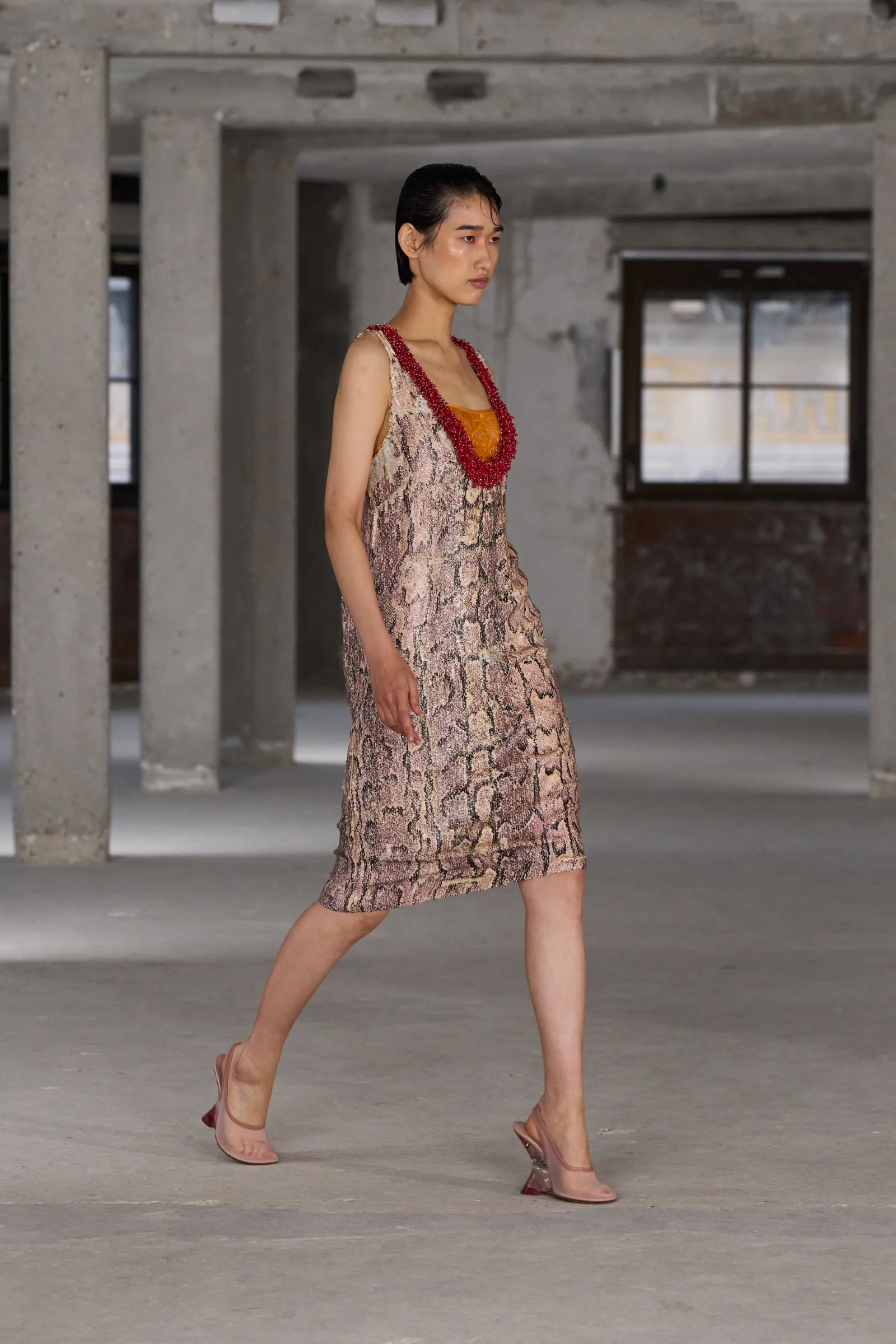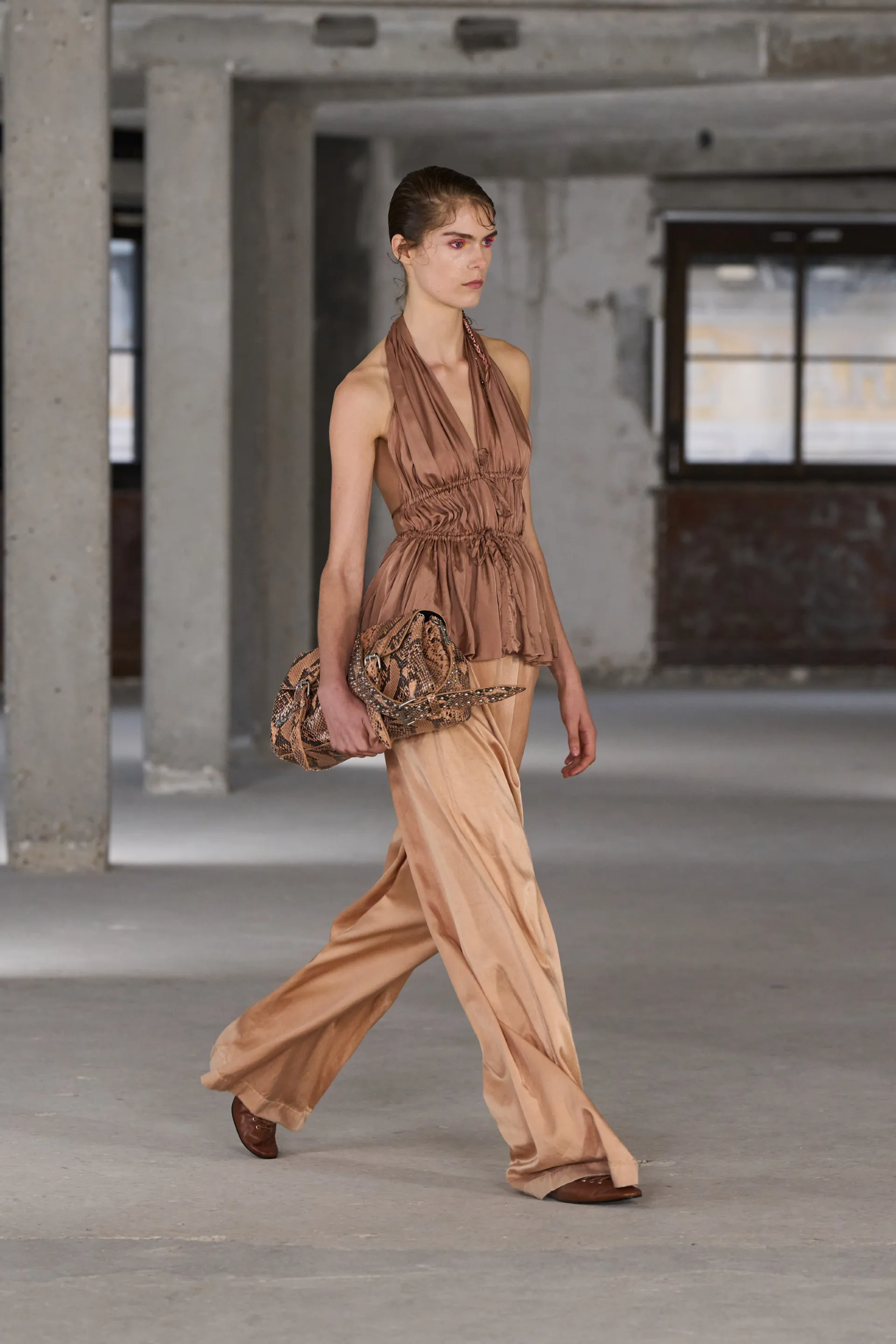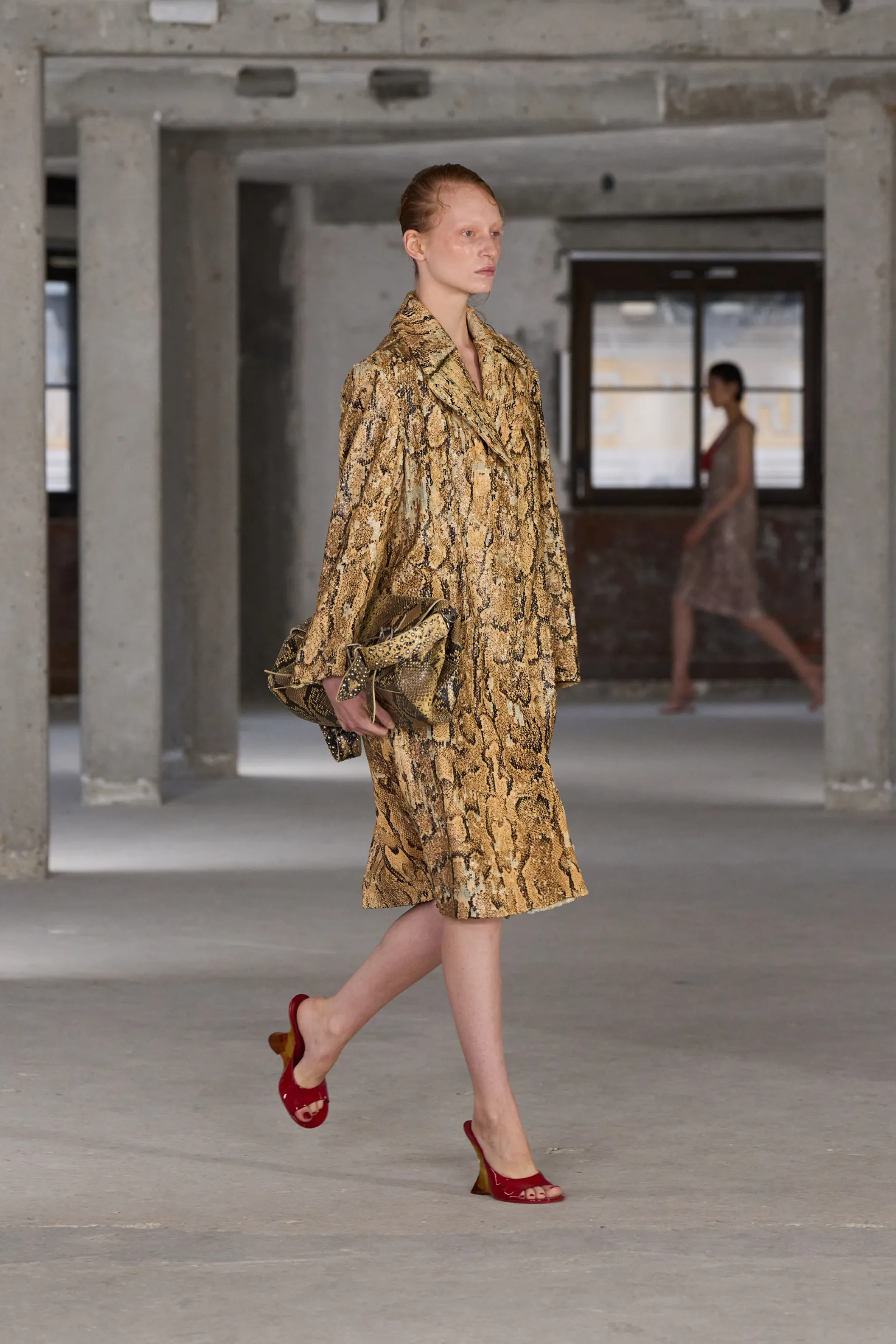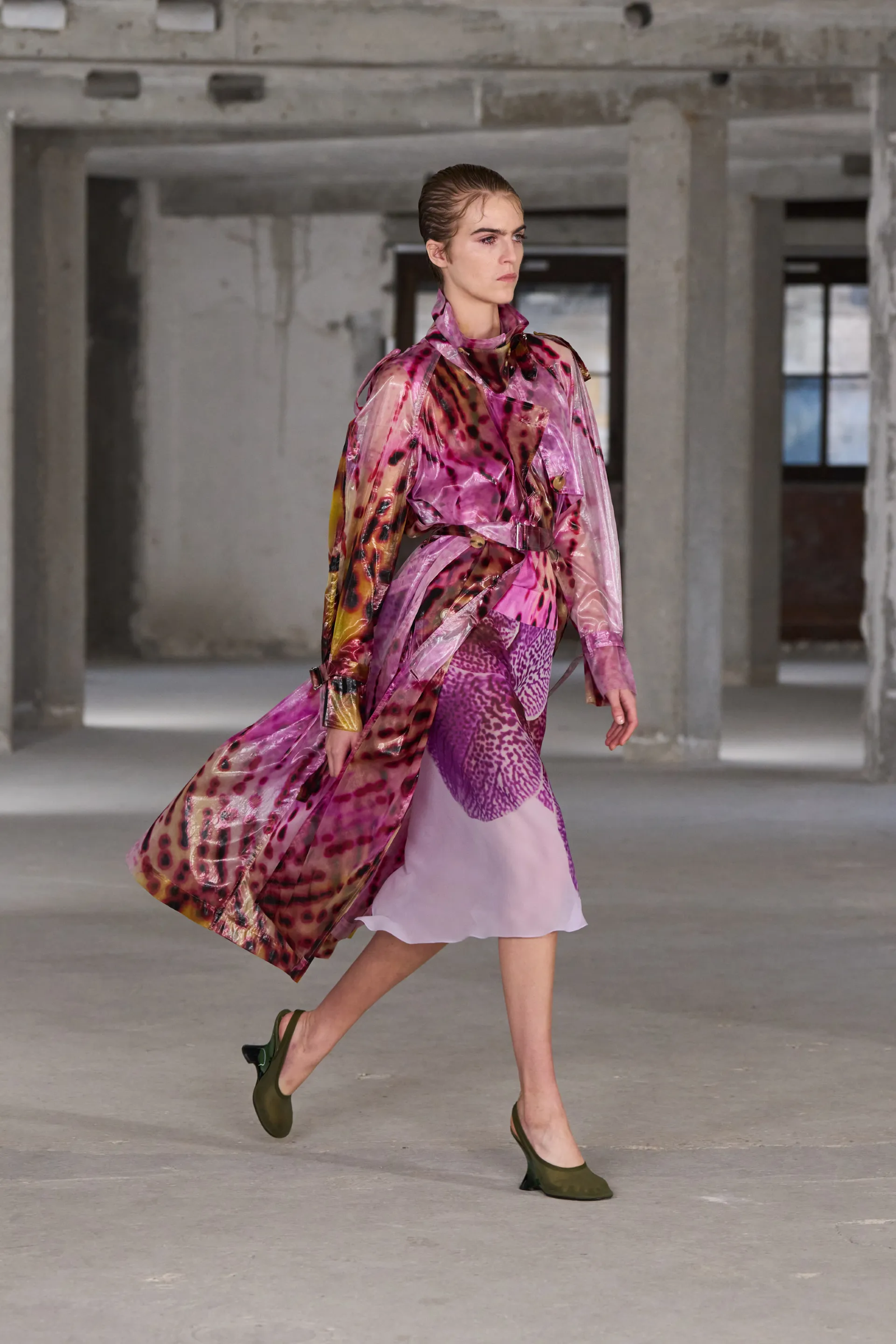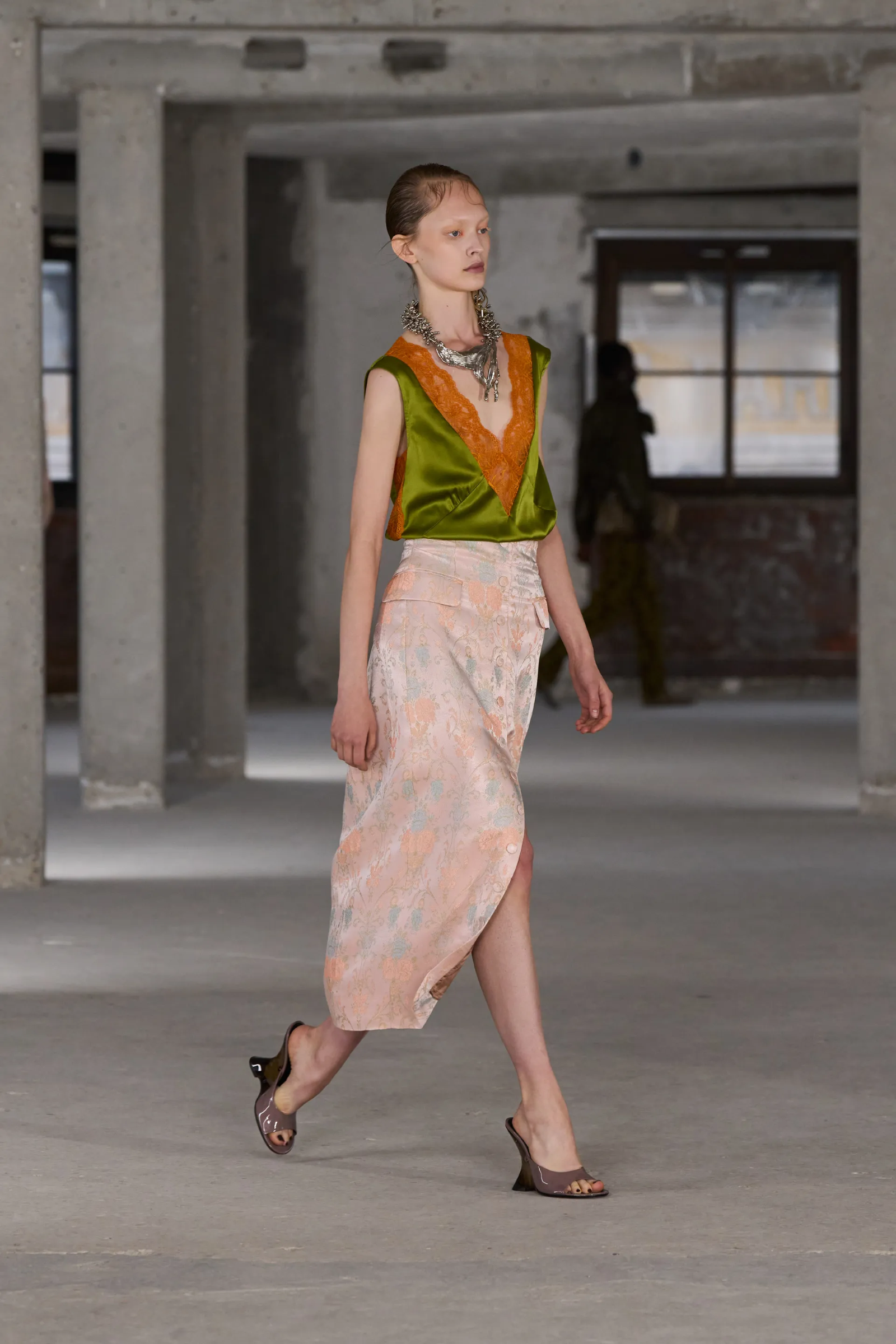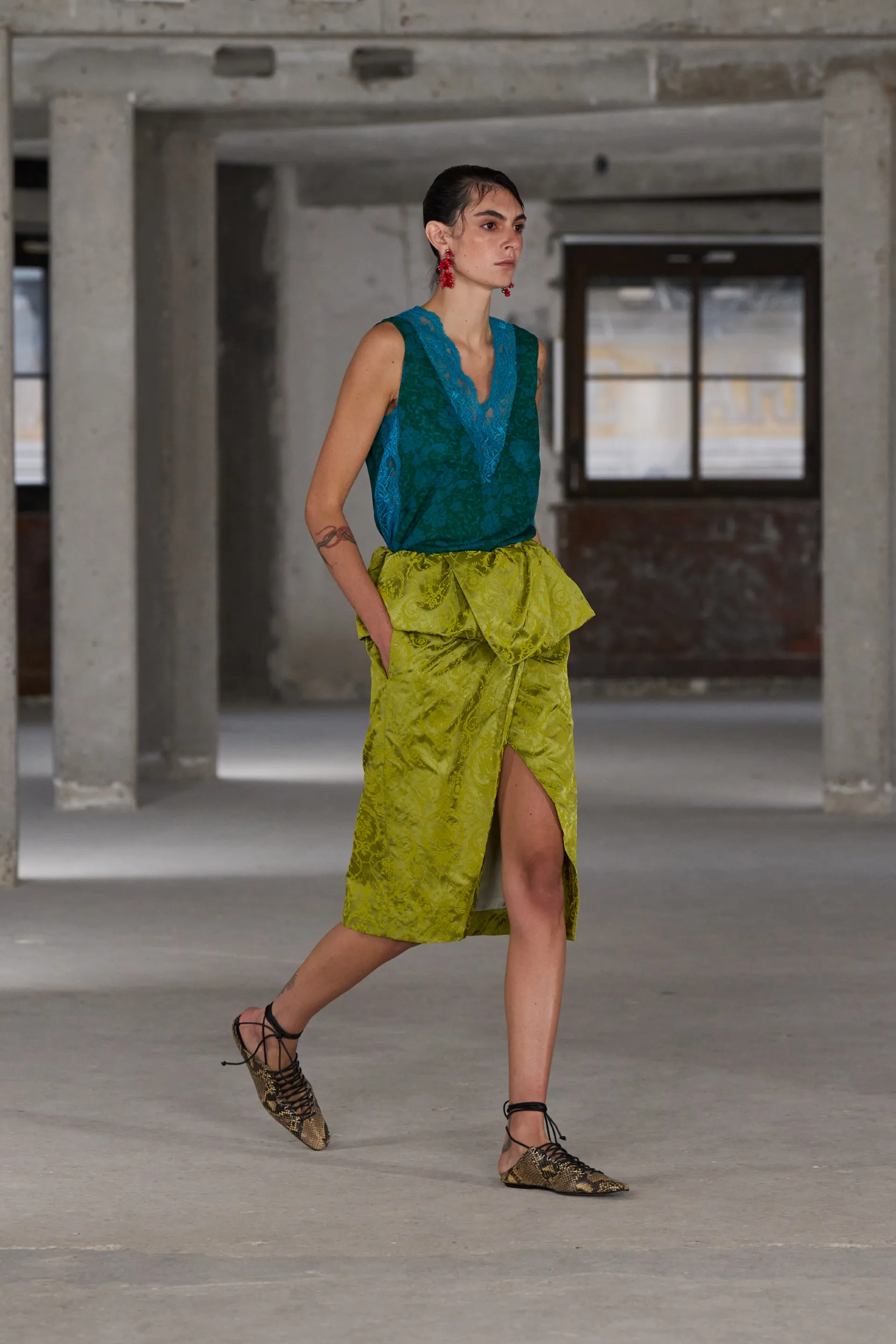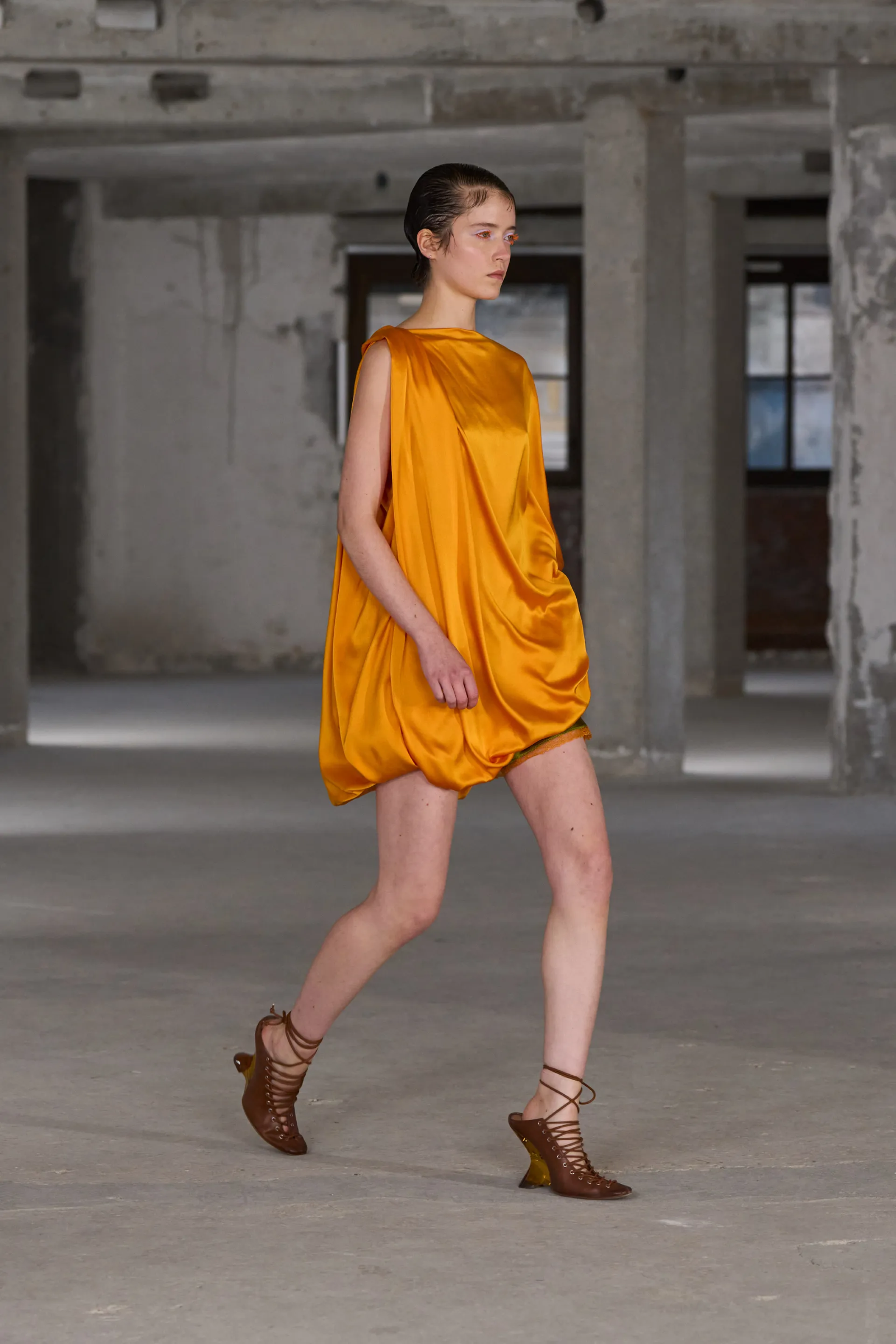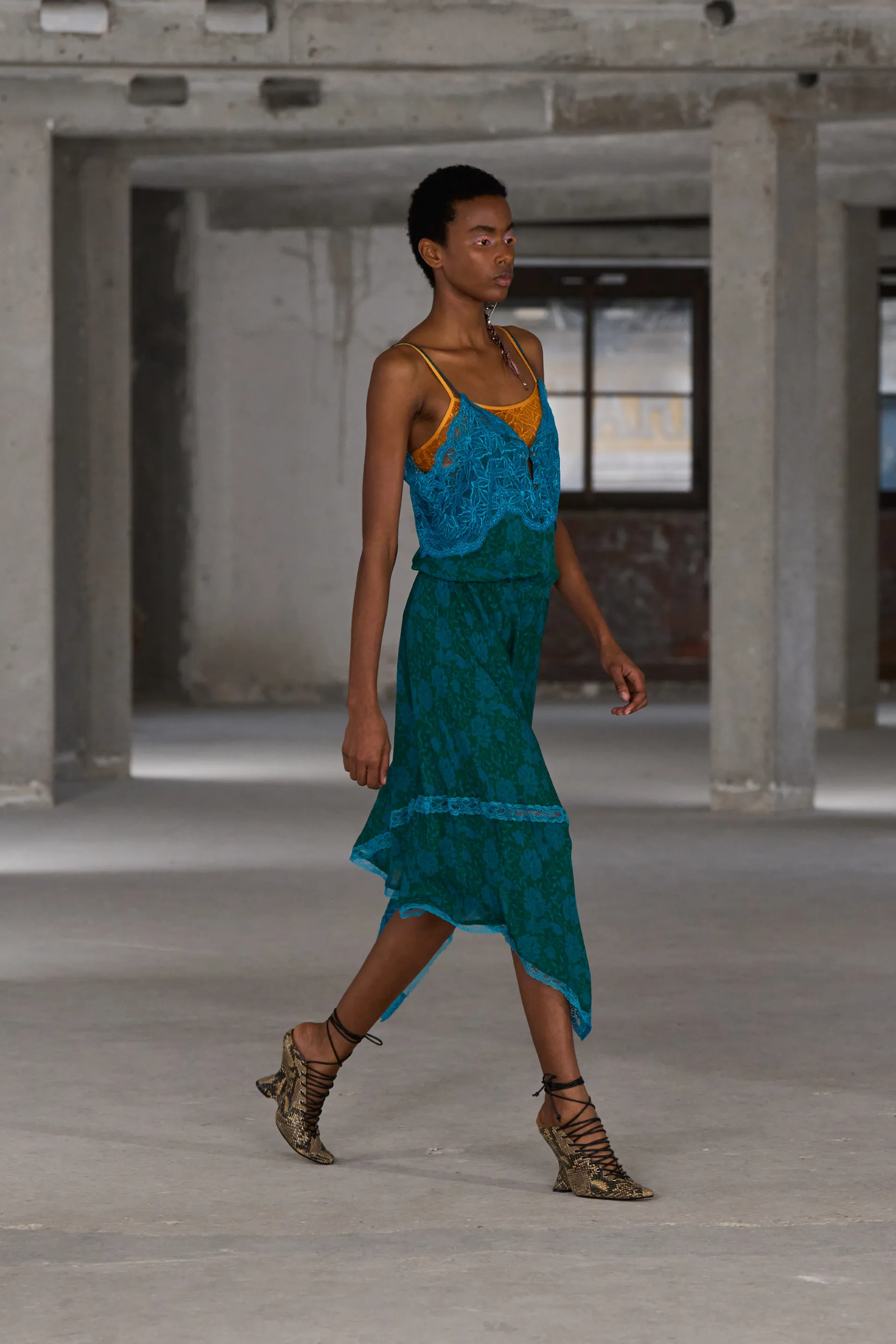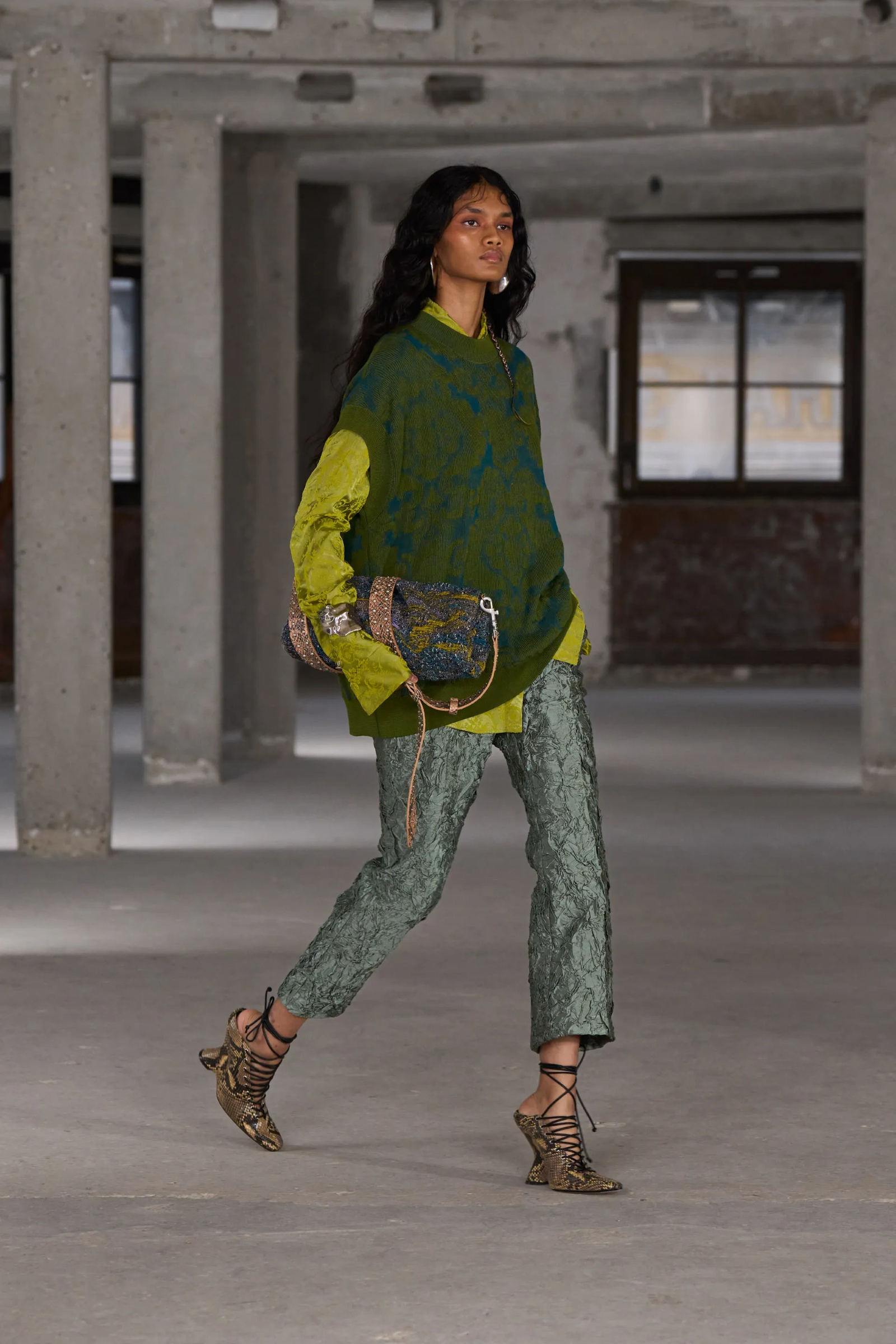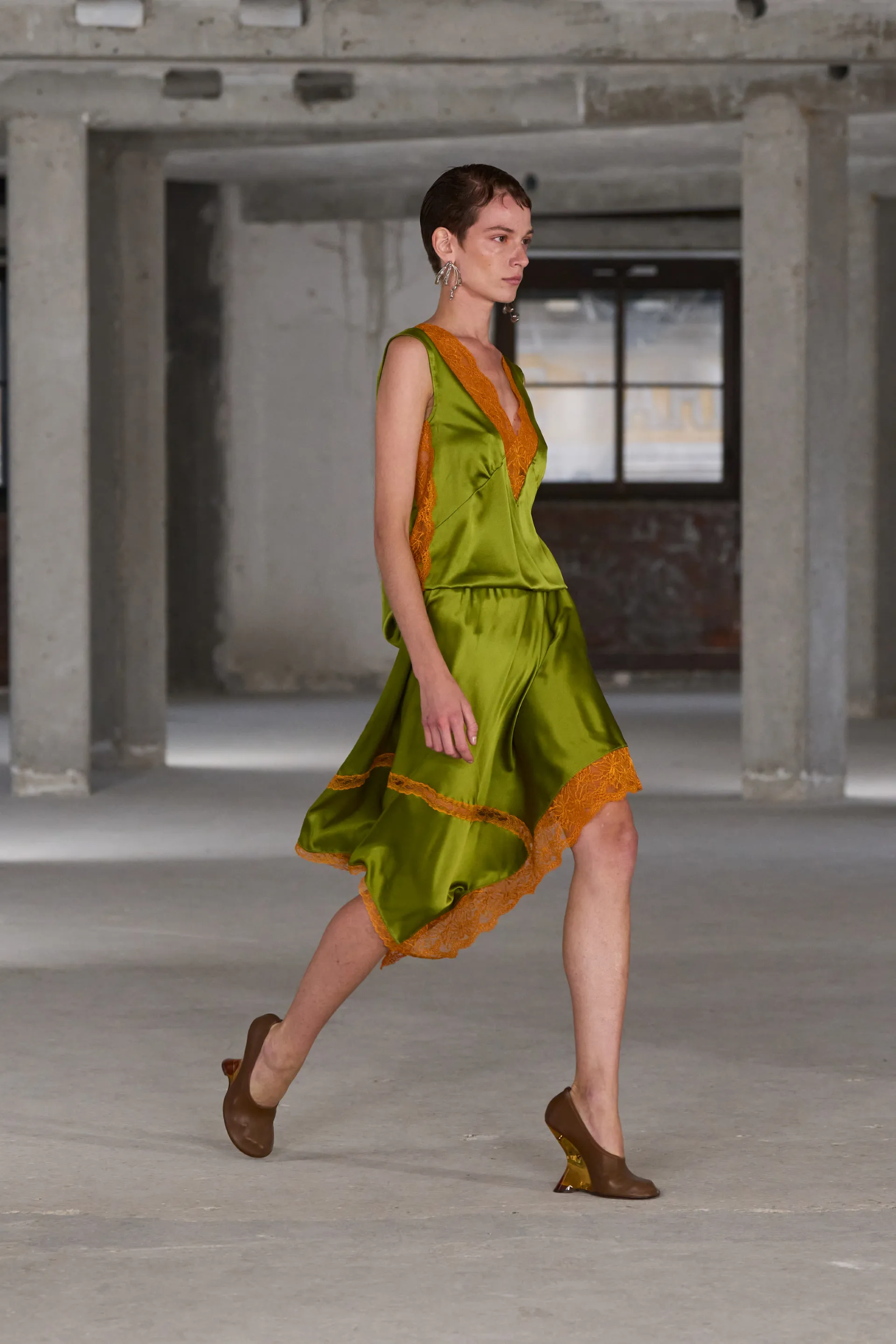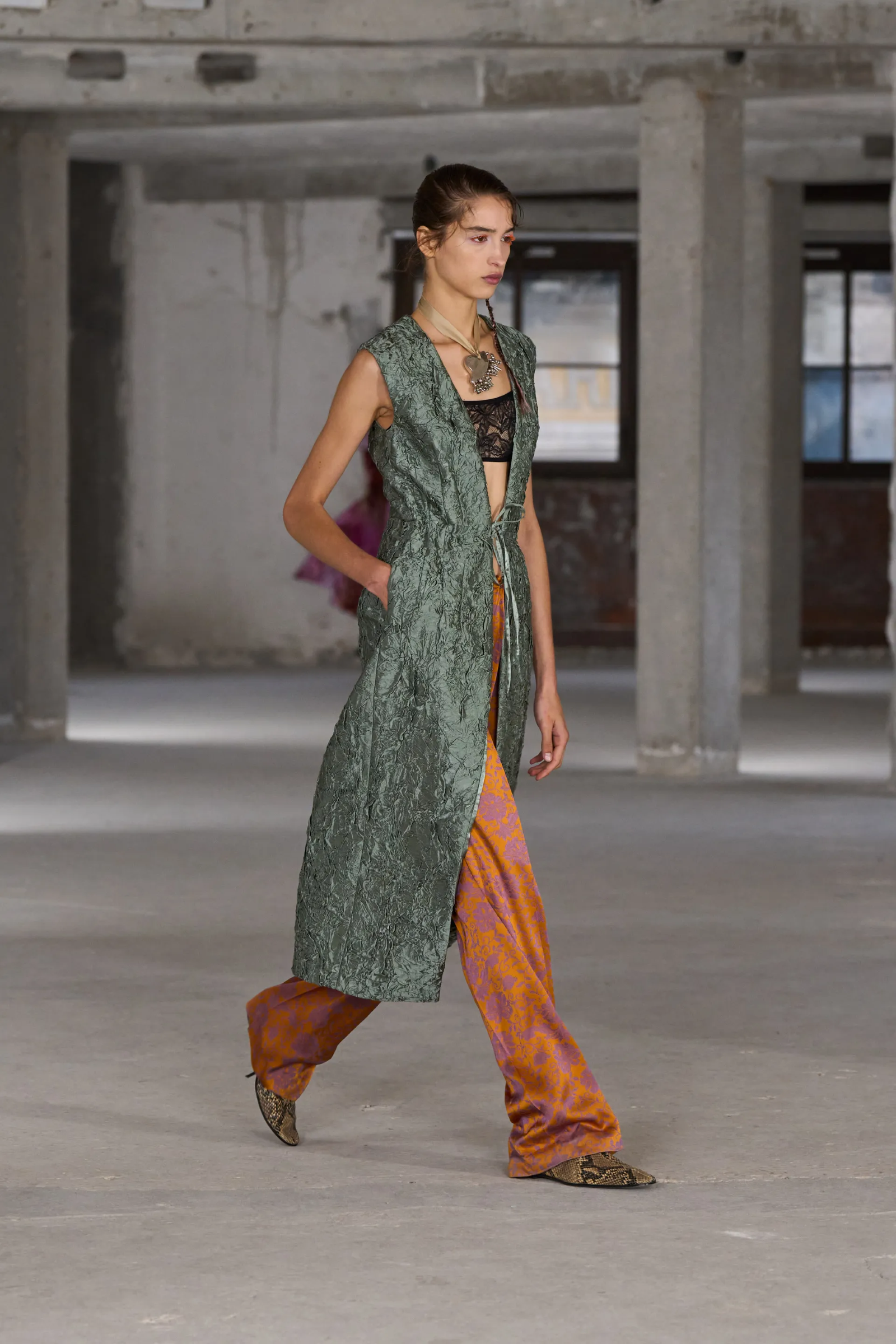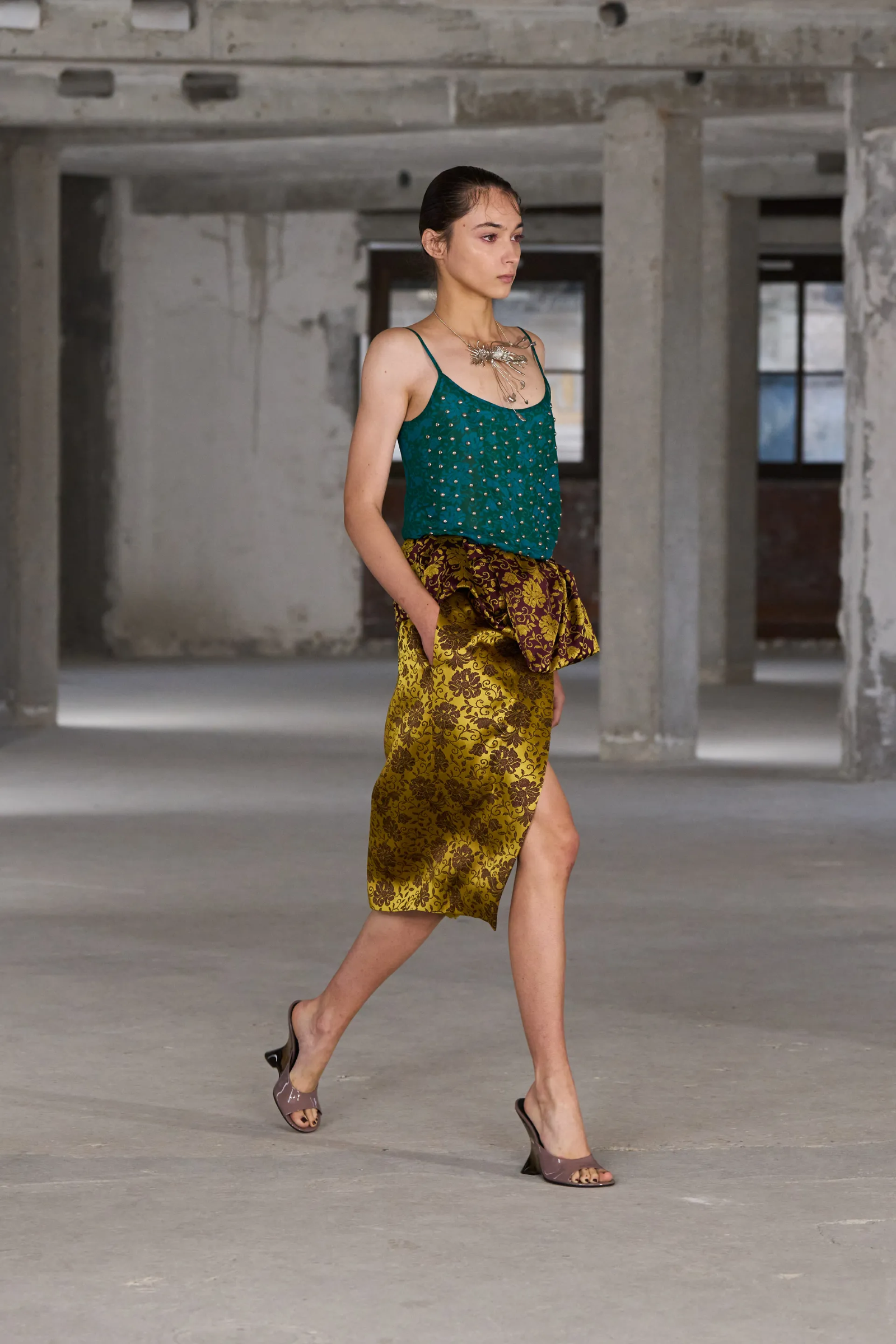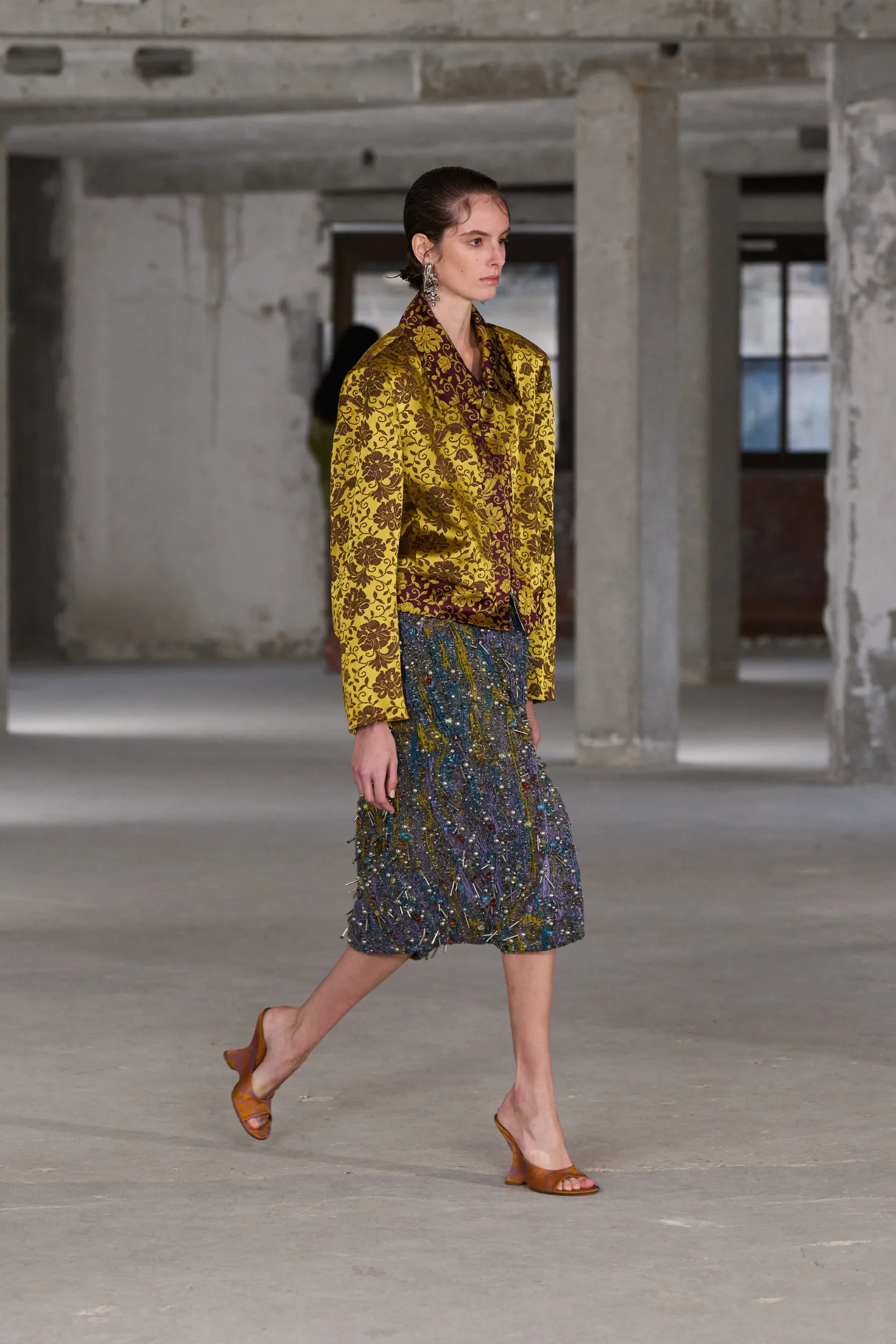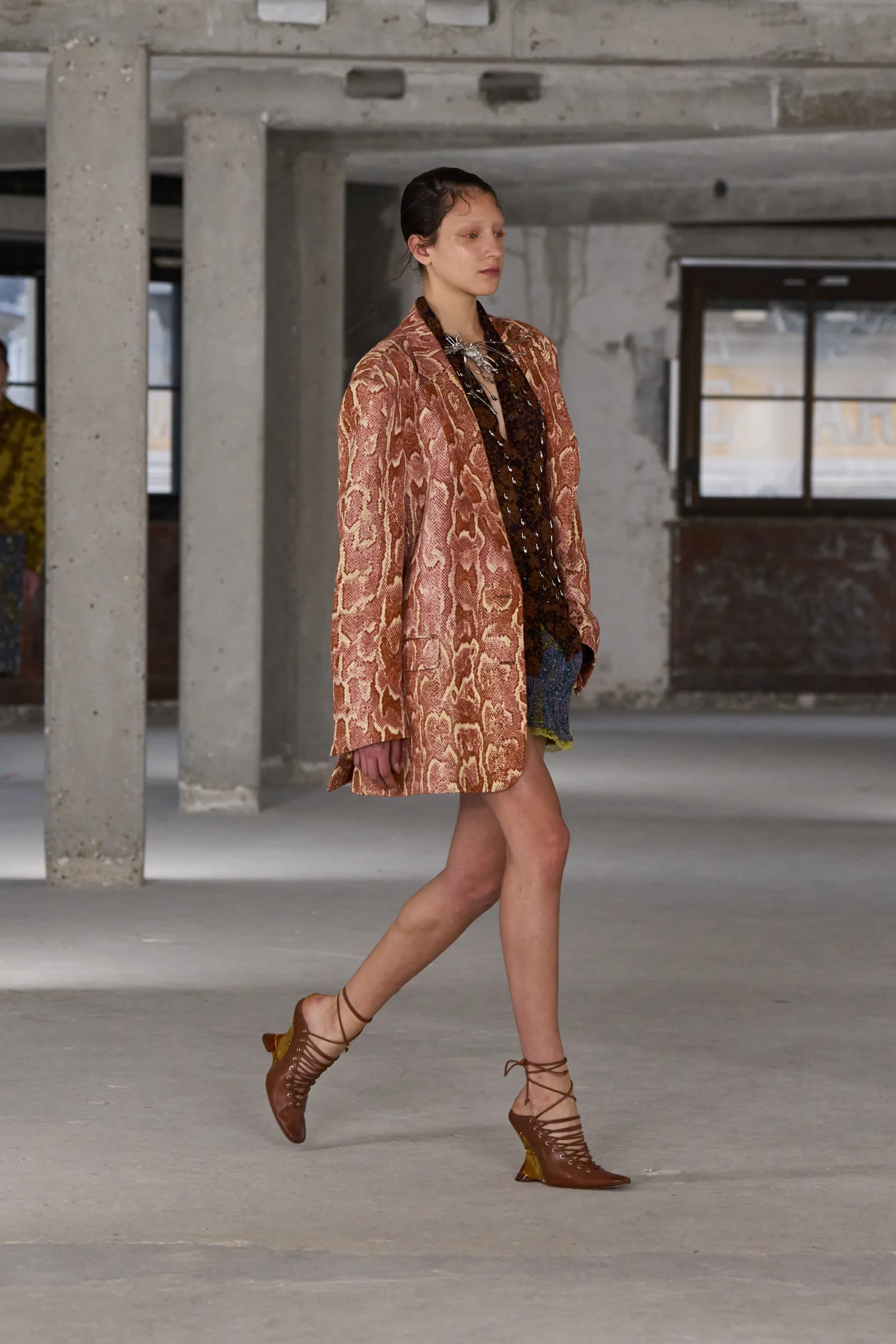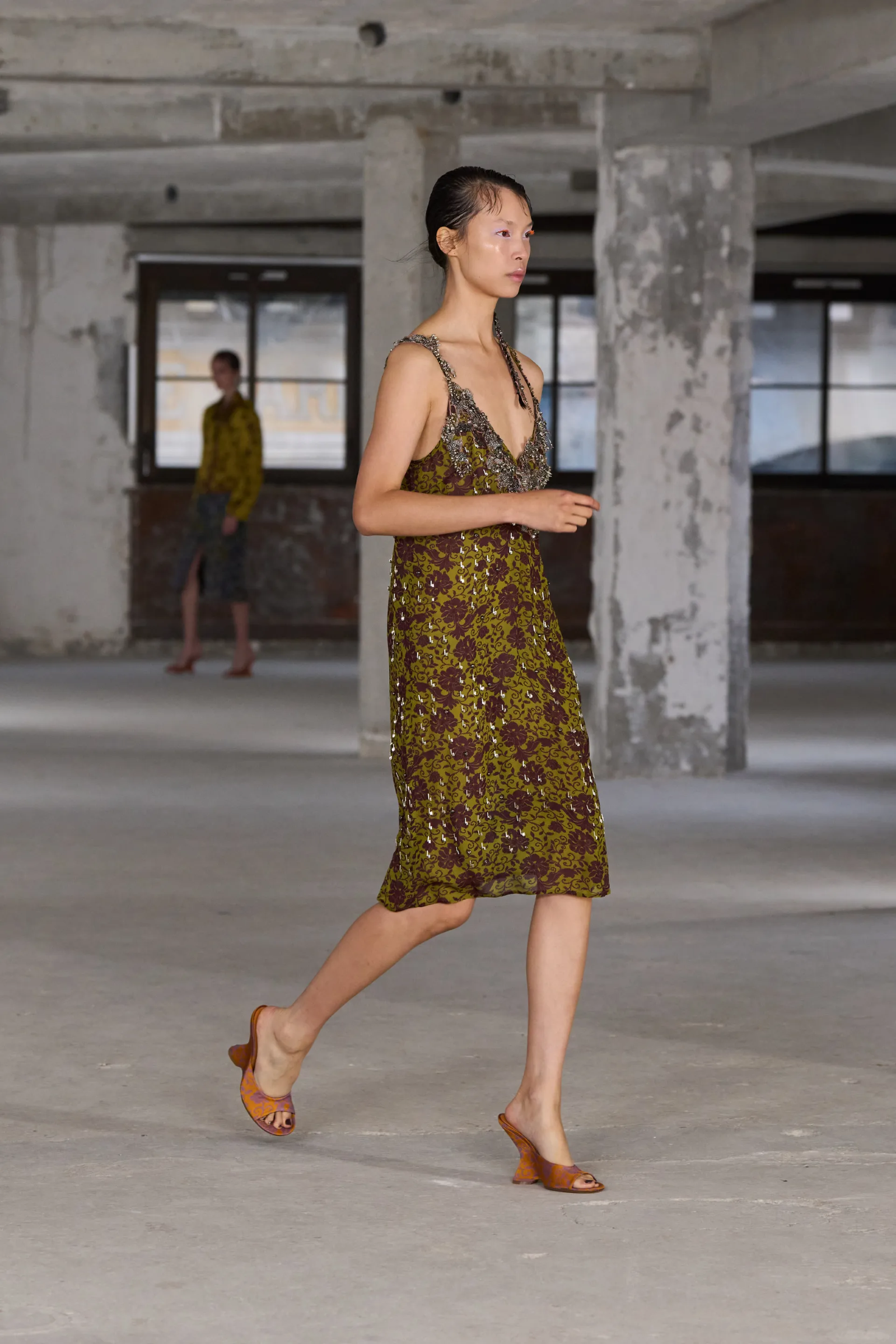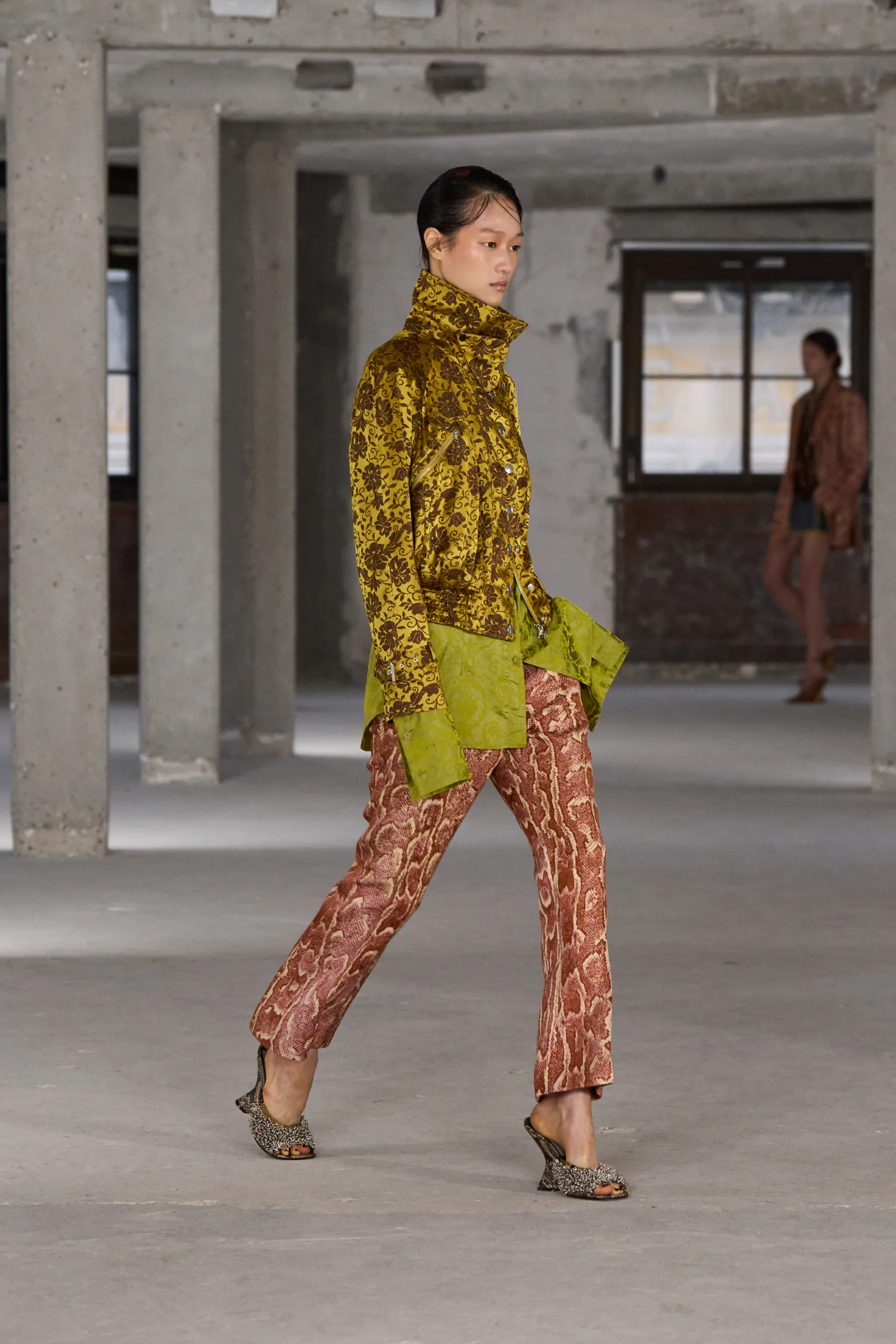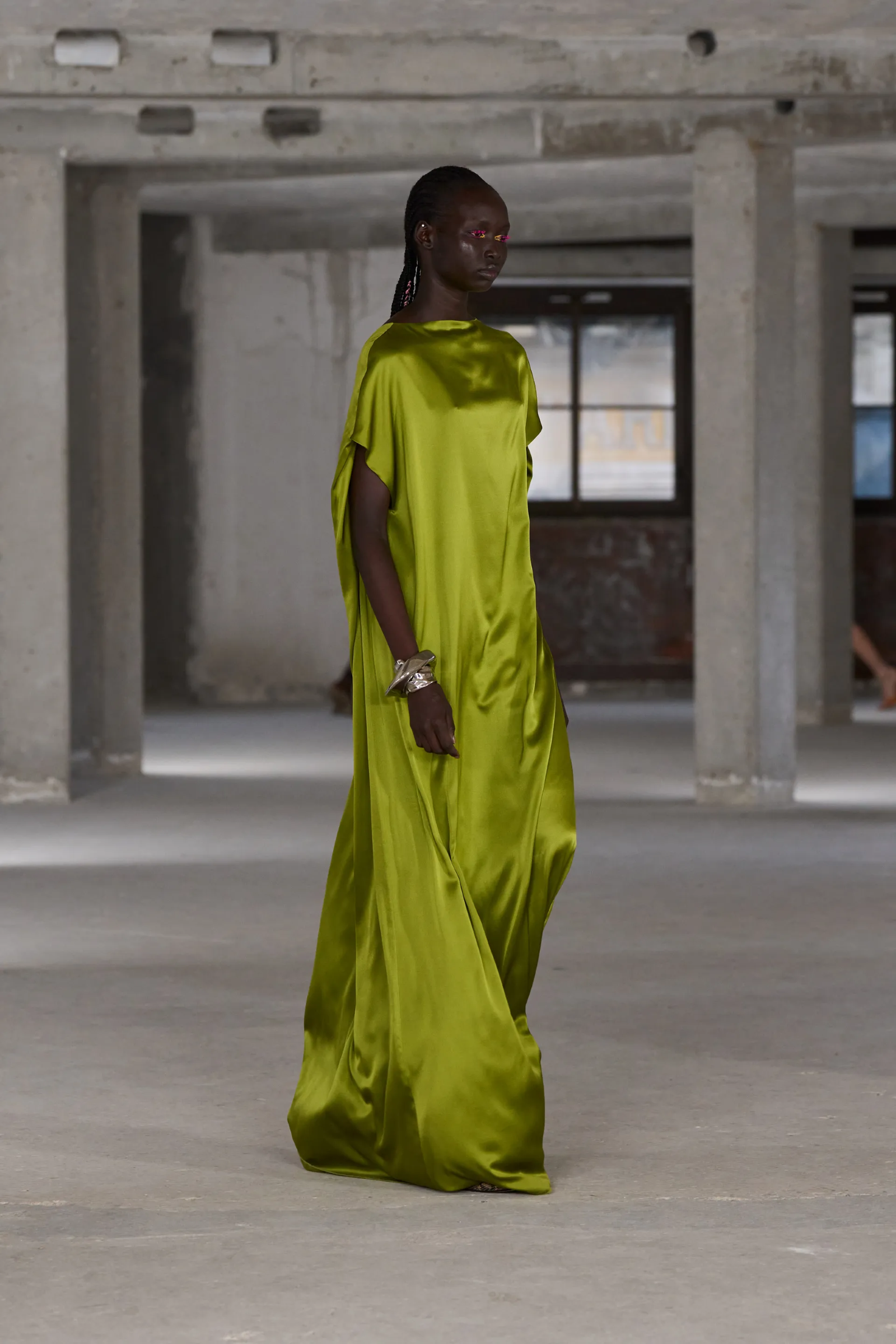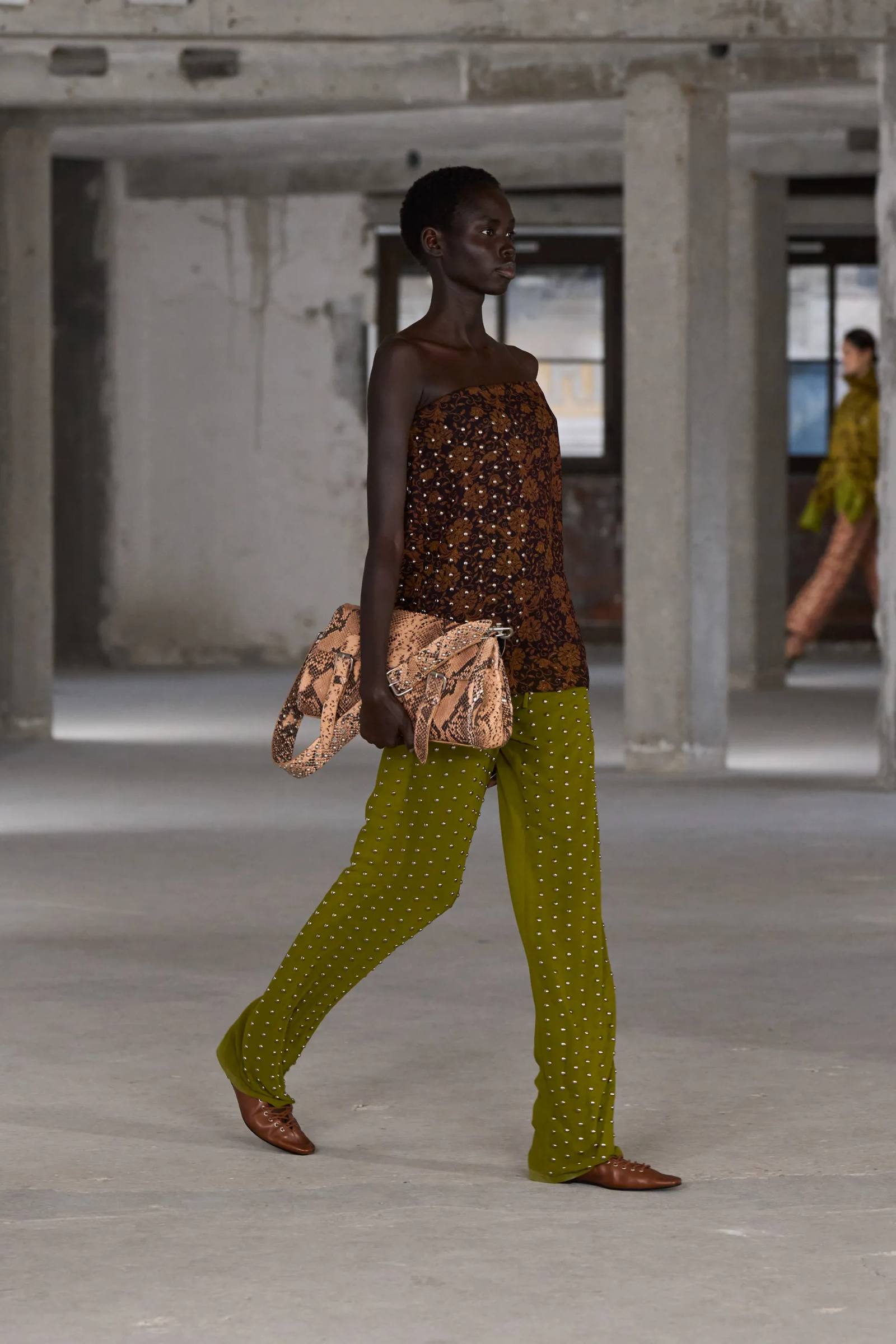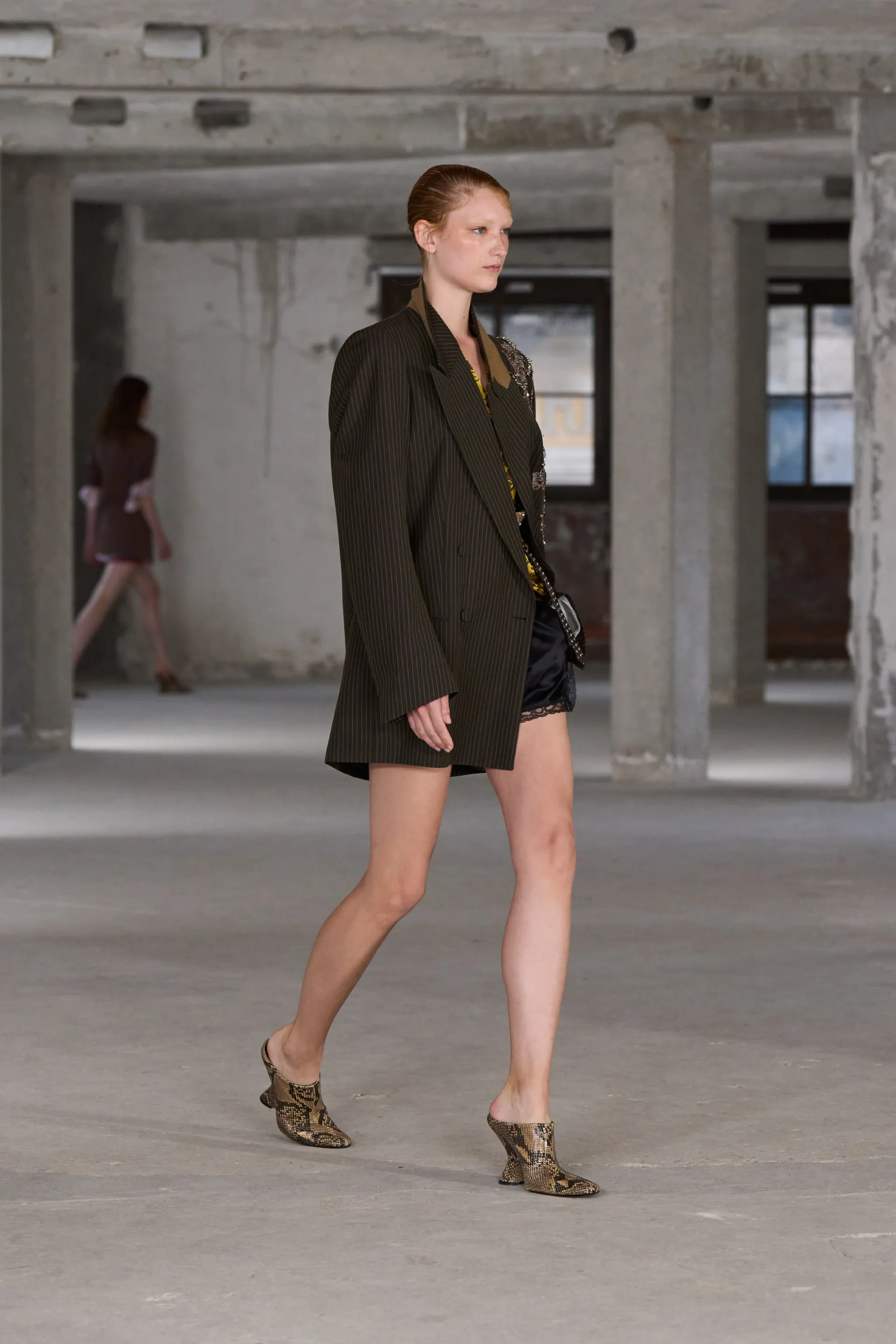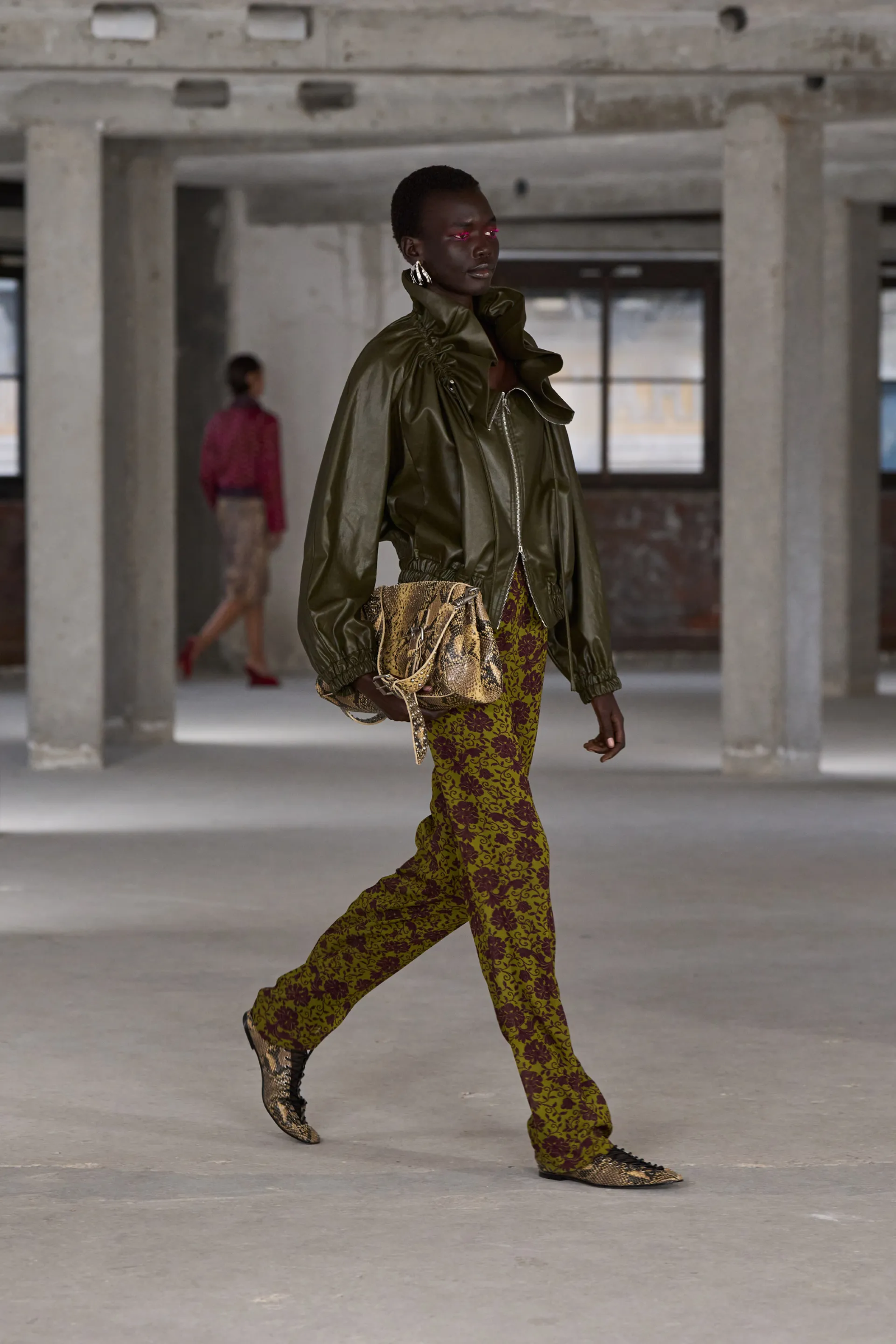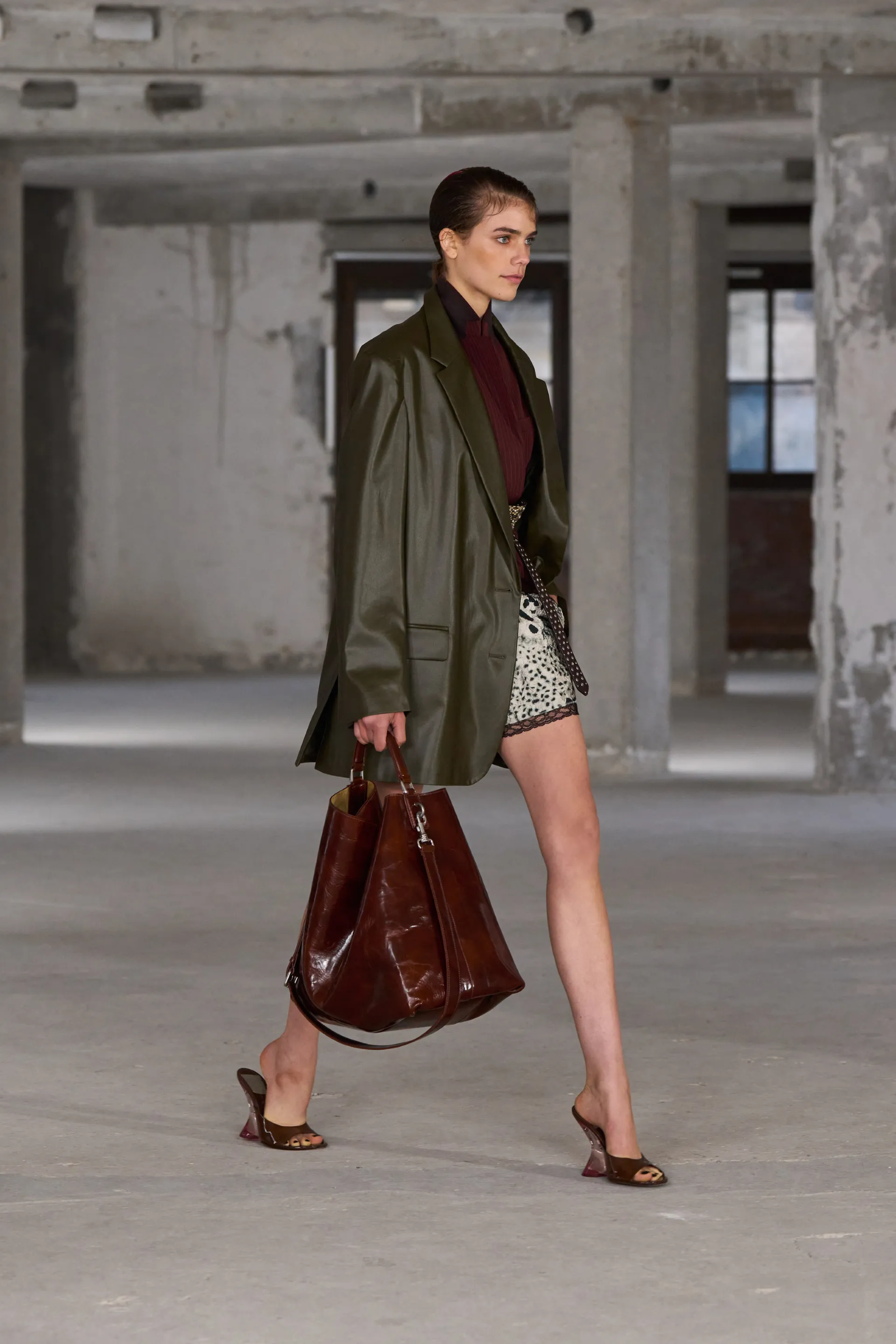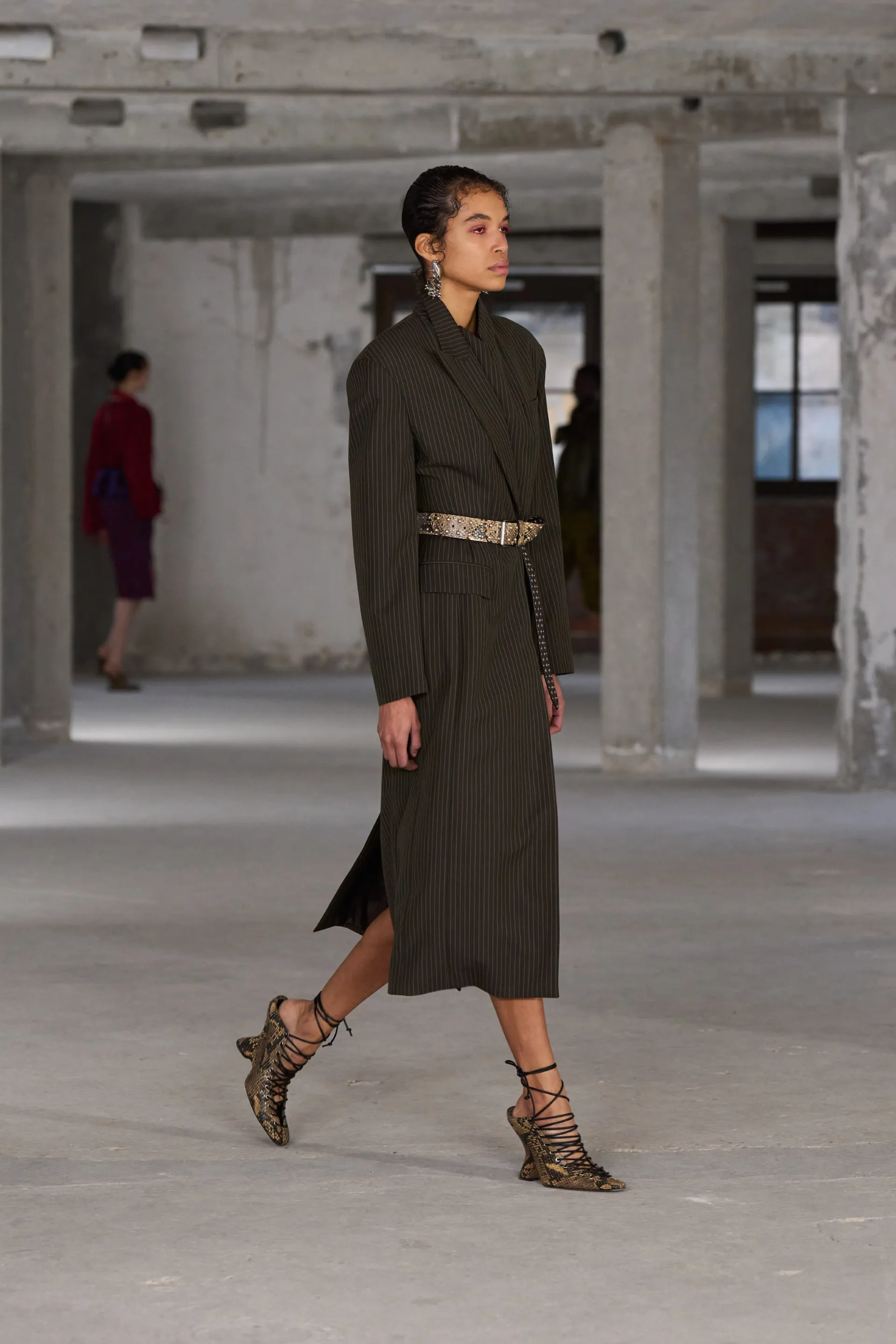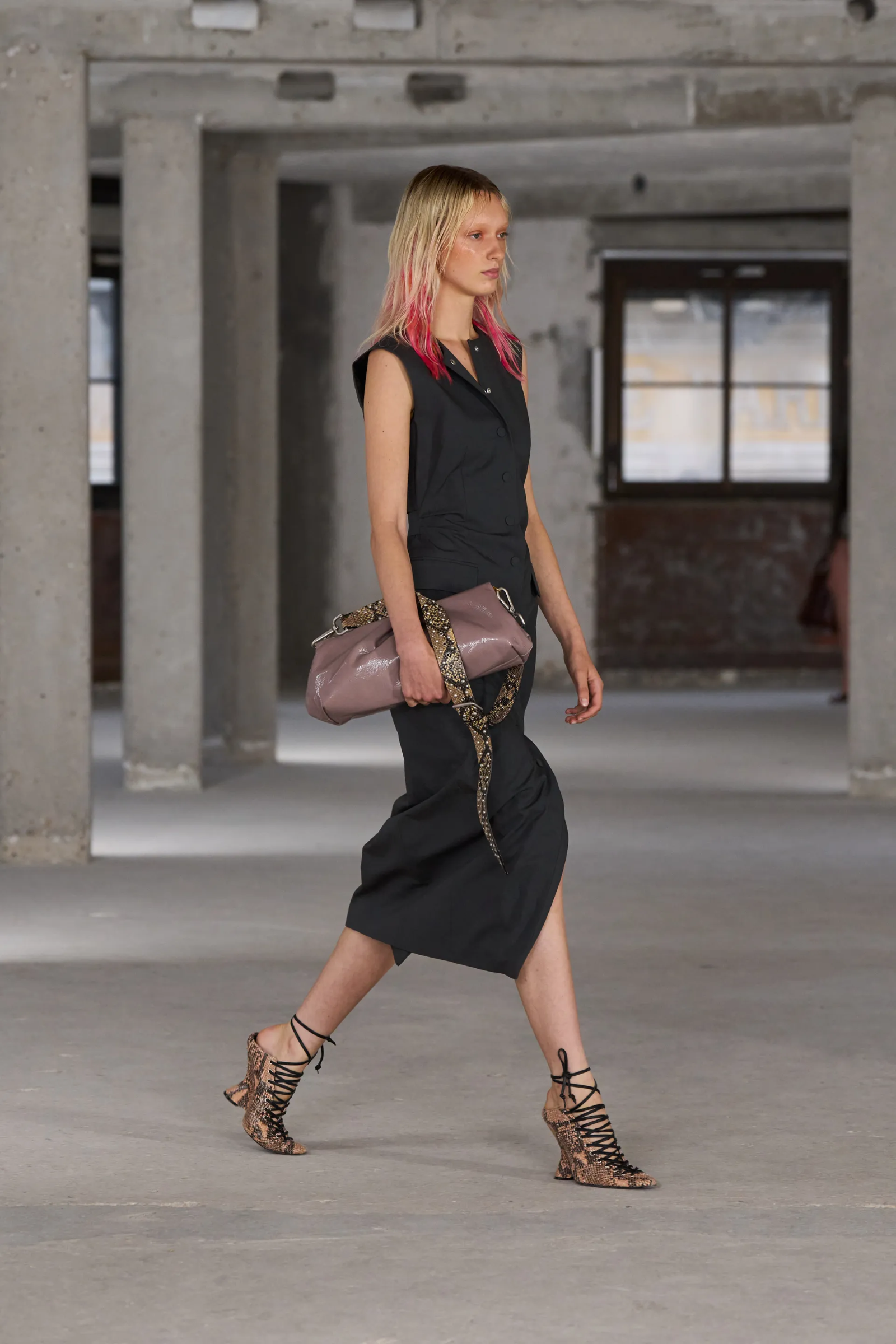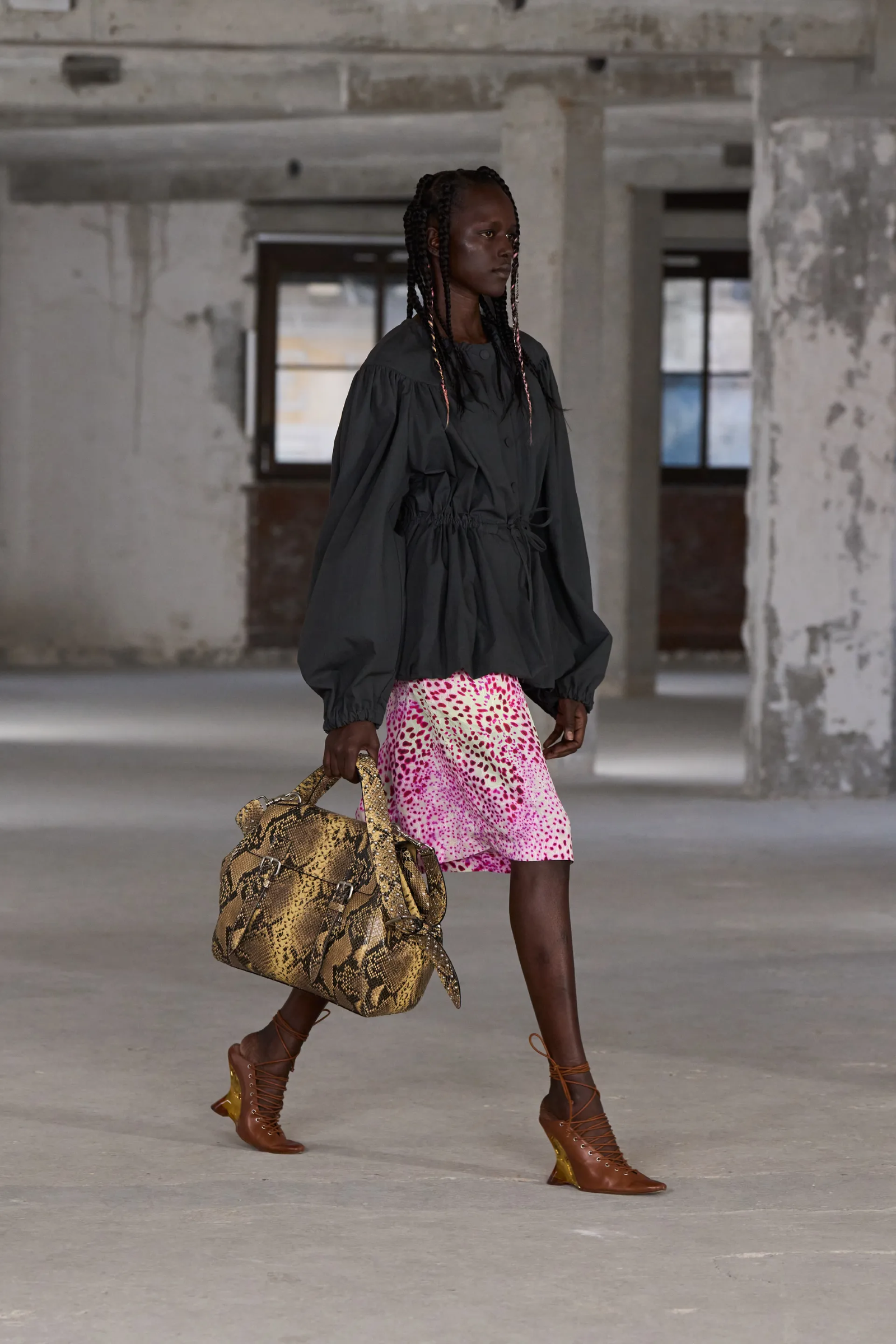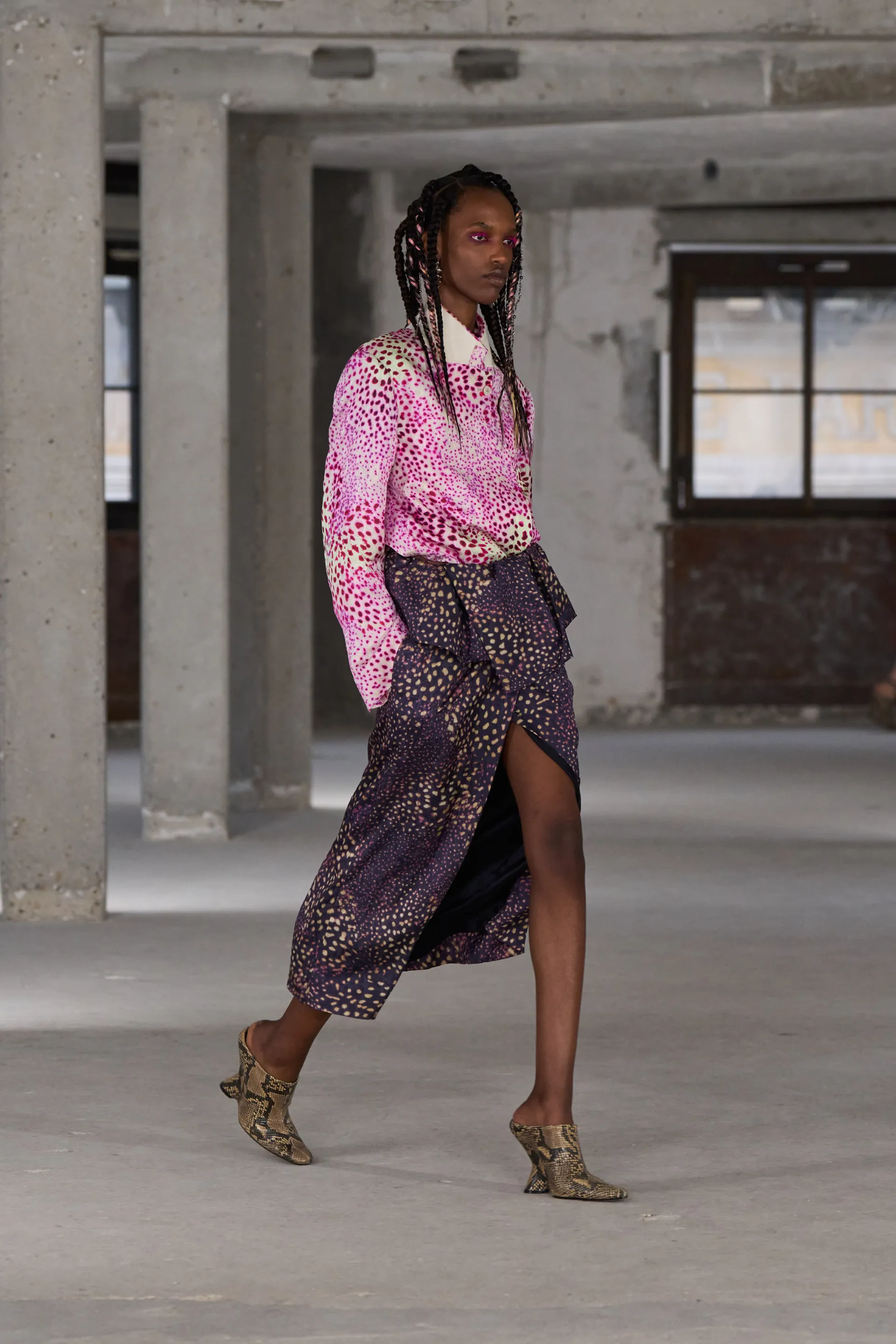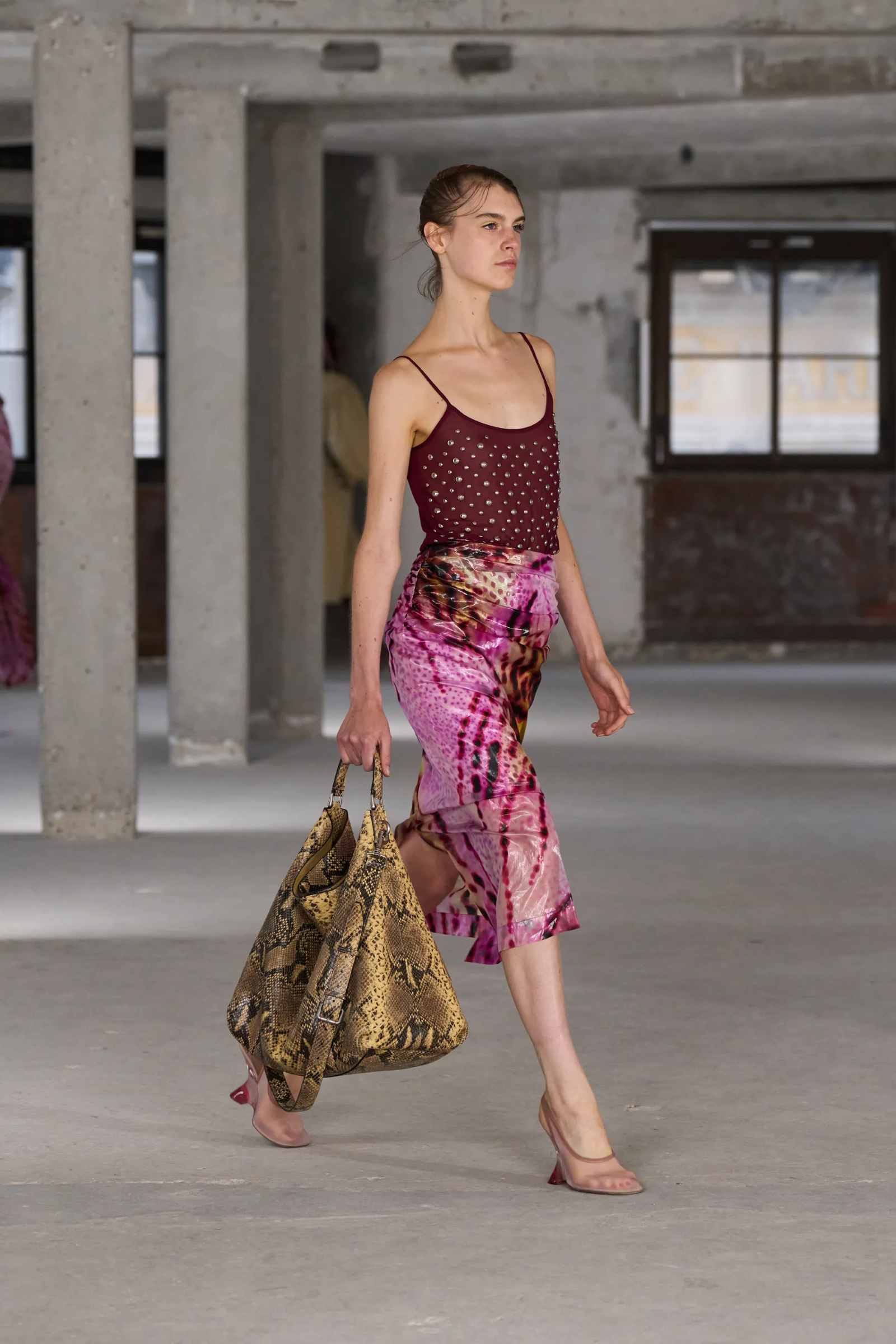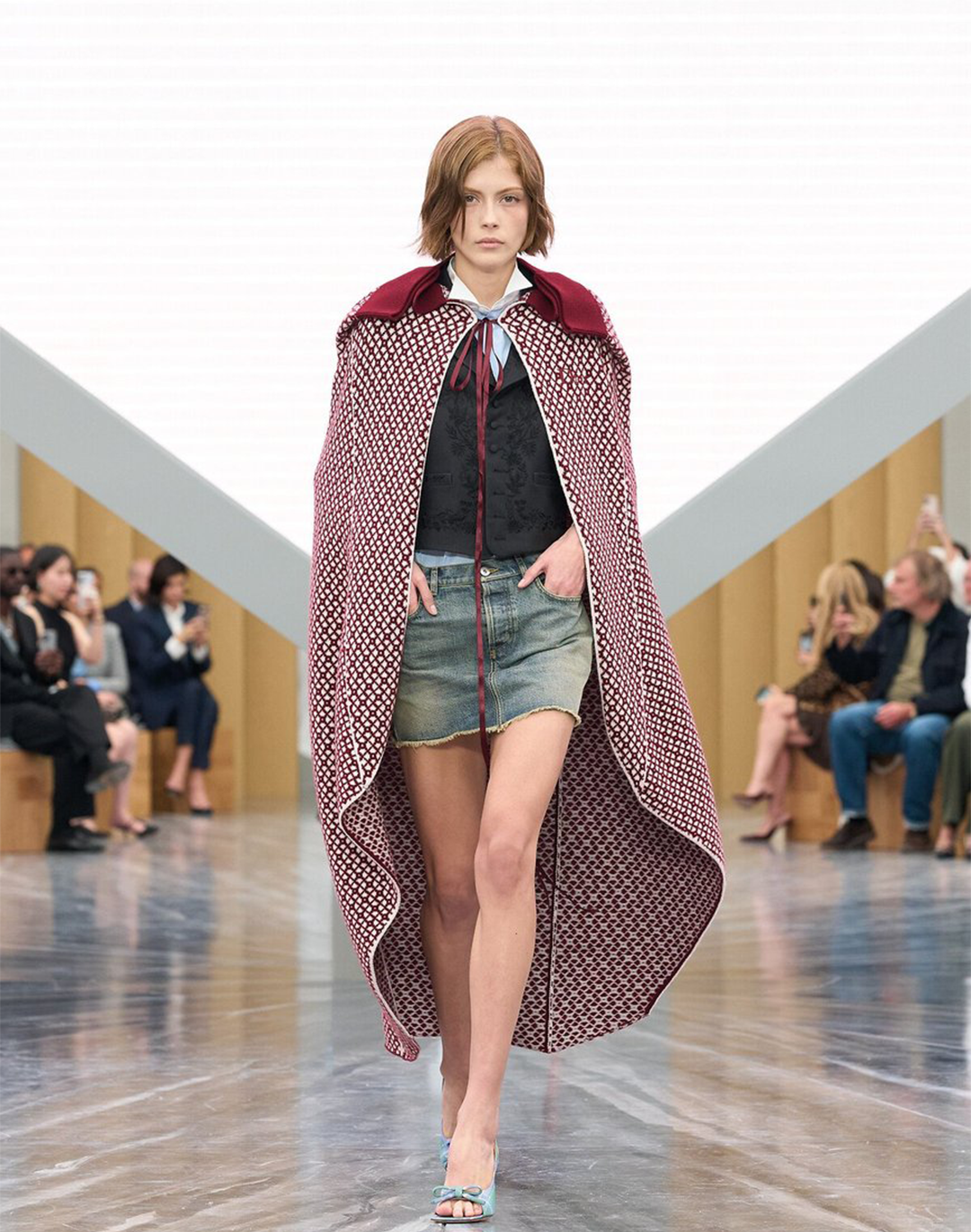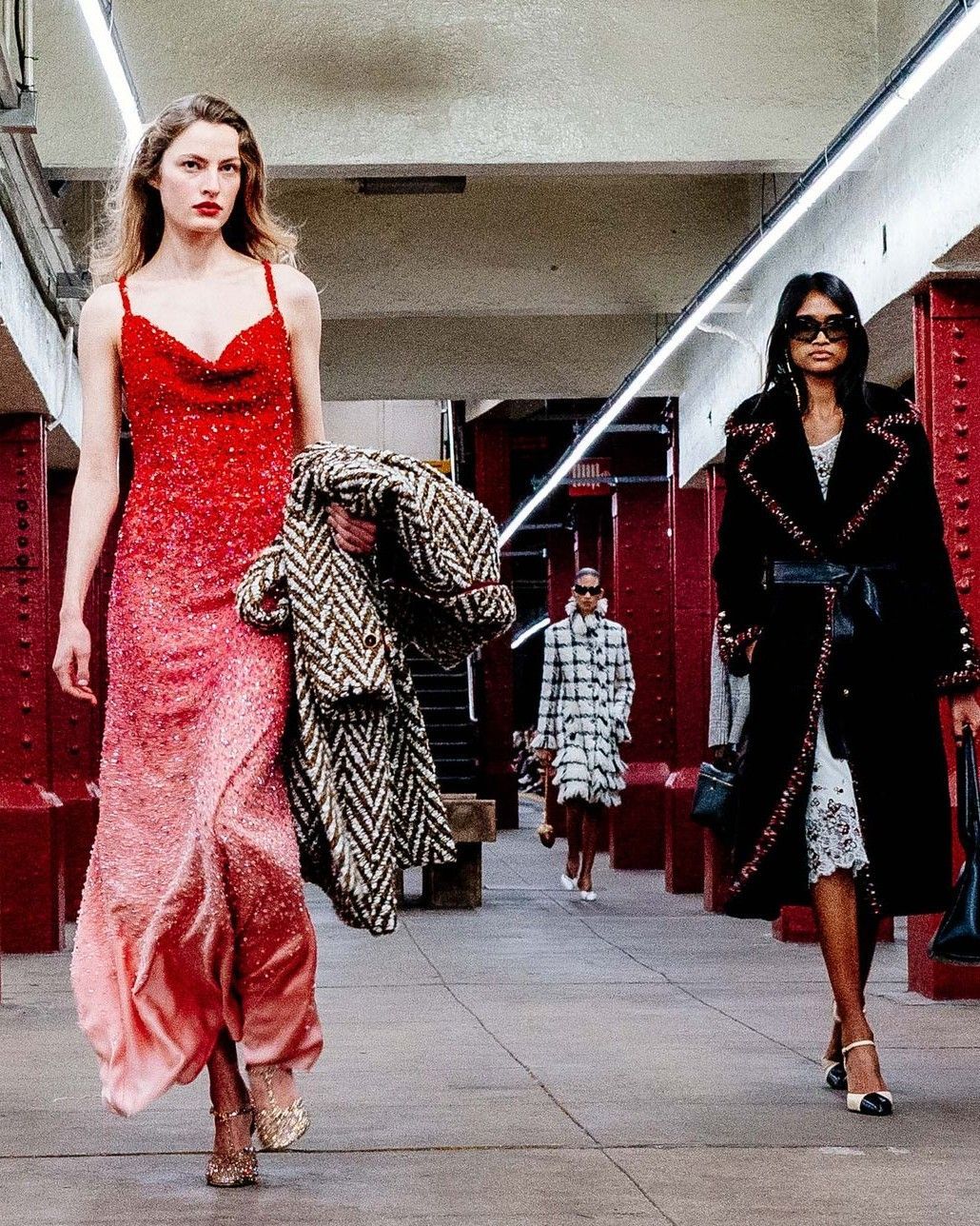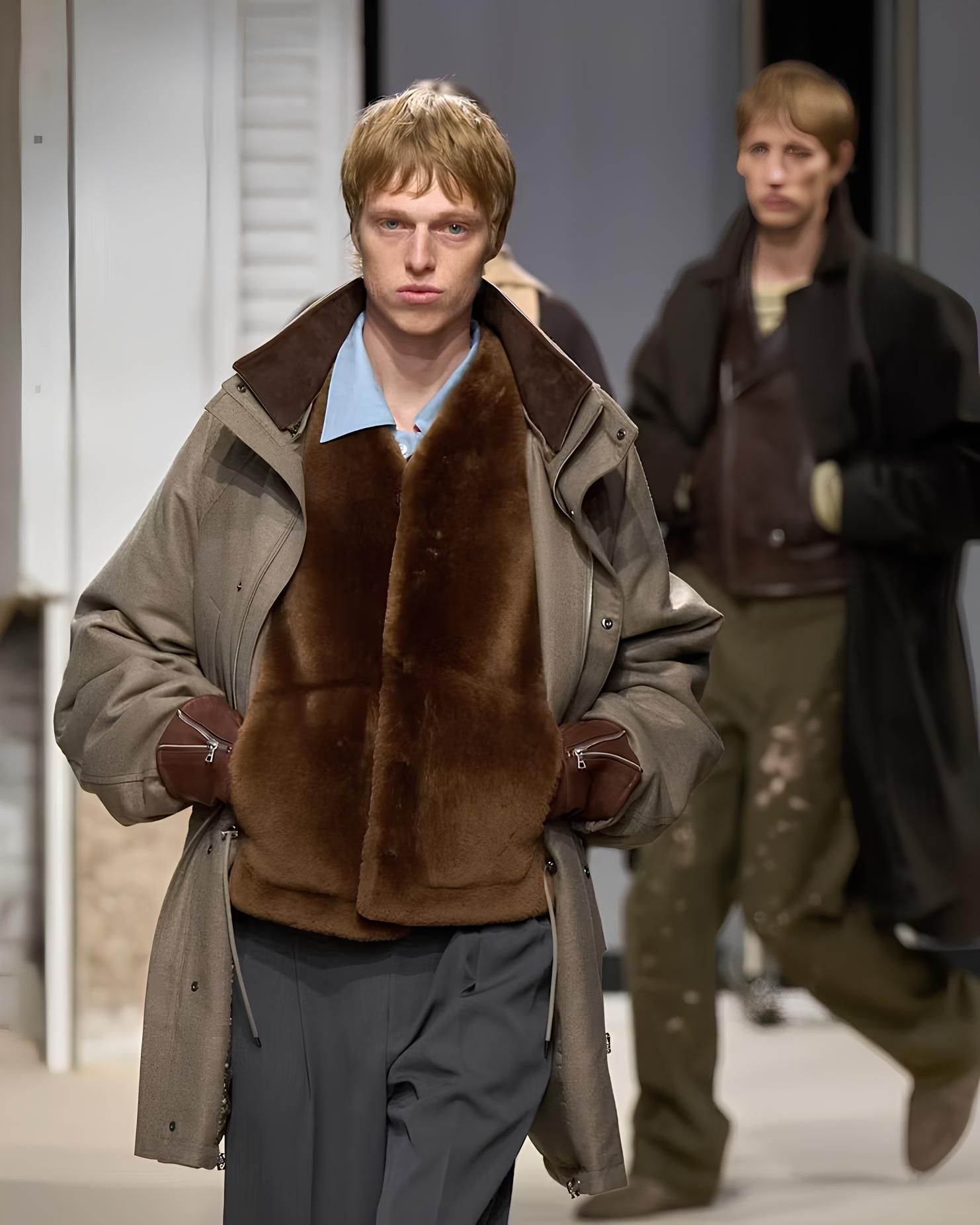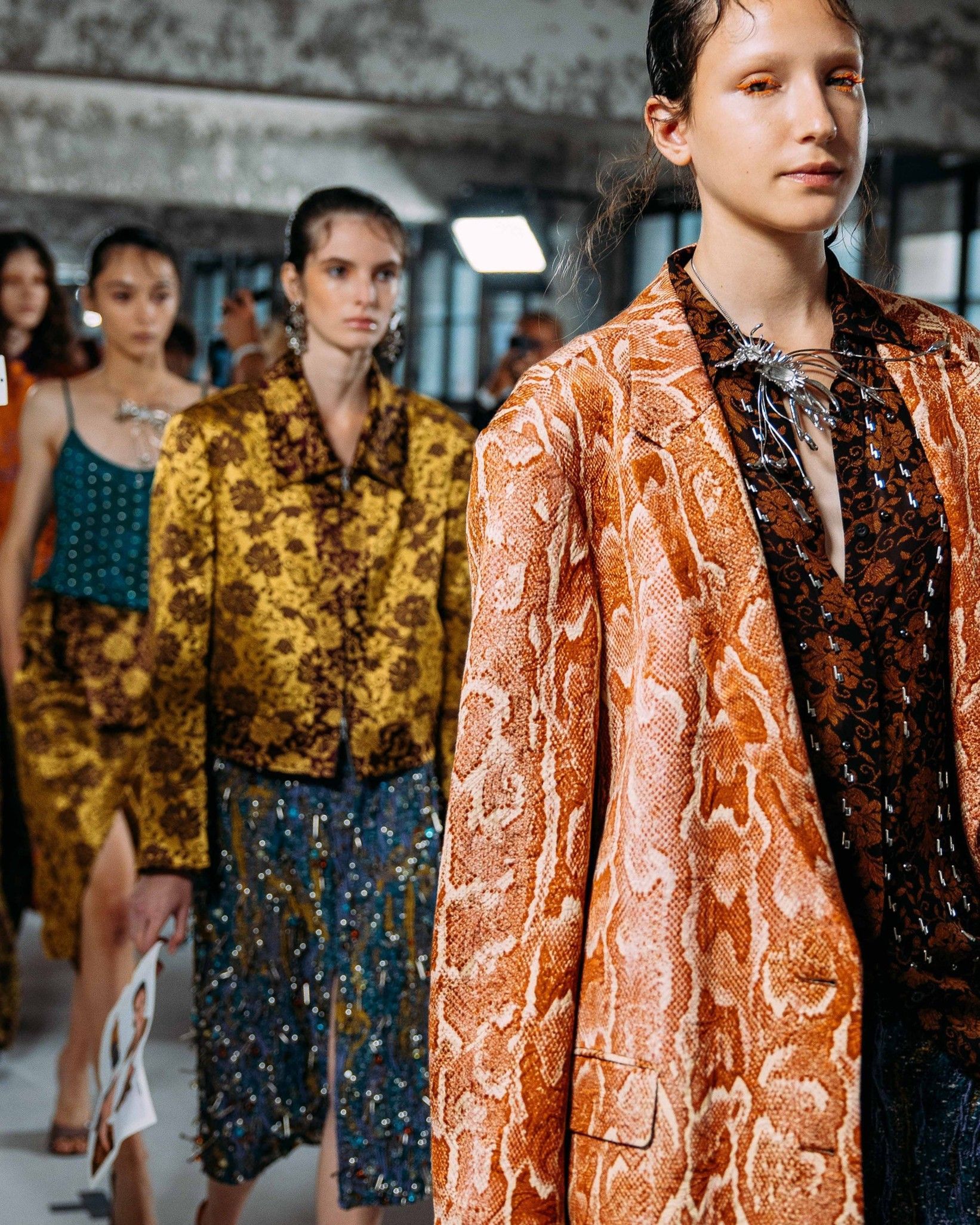
Dries Van Noten after Dries The first show after the founder's retirement is a hit but we have notes
When Dries Van Noten announced his departure from fashion last March, he was keen to clarify that he was not retiring but would remain, as chairman of the brand's board of directors, a close presence to the design team, which, pending the appointment of a new creative director, collectively signed the brand's SS25 collection presented yesterday in Paris. A highly anticipated show, whose outcome many were eager to see to understand how well the brand could survive without its founder – the answer is: very well. We don’t know exactly how much of a role Van Noten played in overseeing the work, or if he had any role at all, but the brand certainly seems to be in good hands for now. This collection certainly fits within the trajectory of greater conformity that has characterized the brand's collections since 2022, which, when the founder was still present, were bolder in exploring proportions and more visionary combinations, while the one presented today in Paris, though beautiful, appeared more linear and disciplined in terms of styling, lacking the hybridizations, idiosyncratic pairings, and often altered proportions that gave the brand its avant-garde sharpness. However, this is not necessarily a bad thing. If what we define as the avant-garde sharpness of Dries Van Noten has partially diminished, the brand's fundamental romanticism, the vividness of colors and prints, that sense of imaginative exoticism and unexpected combinations remain intact. In short, the taste of the brand and its founder are still one and the same, his absence is felt in the greater comprehensibility of the looks, which in the past appeared more layered and architectural.
Even with this greater simplicity, there are certainly plenty of things to admire. The show opened with a python-patterned coat created through the use of matte sequin prints, which reappeared frequently throughout the collection, both in the piping of various outerwear pieces and especially in the magnificent bags that this year became large, structured, and spacious, resembling messenger bags, and found a new opulence in the python pattern. Another dominant print in the collection was that of the orchid, appearing both in the form of colorful, intense streaks and in a spotted, almost abstract version reinterpreted through different colors and numerous cuts, the most notable being those of the outerwear: first, a sort of glossy and transparent trench coat that comes alive with a fuchsia glow, one of the best pieces of the show; second, in the jacket with the gigantic collar of the penultimate look, which, with its gray color, also evokes a leopard print; and finally in a series of shorter jackets that mix both the spotted and python patterns. Another standout piece is the silk skirt covered in a floral motif repeated elsewhere in the collection, folding over itself at the waist in a basque (a flap of fabric that drapes over the waist) with incredible nonchalance, evoking that sense of vaguely decadent grandeur that has often led to comparisons between Dries Van Noten and Romeo Gigli. It’s also impossible not to mention the shirt-jackets tucked into trousers, the shoes with curved heels, the garments covered in spherical studs, and the two coats, one sleeveless and one regular, made of luminous froissé silk or crumpled satin with a vivid texture.
Among the negative points, there are some color combinations that are not quite right, especially with regard to the orange lace that emerges from certain necklines in the form of a semi-transparent bra-top, perhaps the least convincing element of the collection, as well as some of the more monochromatic looks, particularly the beige ones and the two sack dresses, which appear more generic in their conception. Another noticeable aspect is the abnormal presence of bags, along with styling that at times seems to nod to certain trends seen in numerous shows this season (we refer both to the contrasting lace hems used by almost all Kering brands and to the blazers paired with shorts), likely driven by a desire to expand the brand's appeal to younger audiences than usual. A particular pale pink suit decorated with a subtle floral pattern, with its two pieces appearing separately in two different looks, seems unnecessarily heavy and too large for the model wearing it. But it’s clear that, with Van Noten gone, some things about the brand would inevitably change. Certainly, moving forward, the best path will be to maintain the designer's approach without reducing his aesthetic to a set of simple stylistic tropes—something that did not happen yesterday but remains a potential risk, considering the brand is now in the hands of an ambitious luxury group. Despite everything, and considering the extraordinary competence of the design team that produced a collection that does not feel as transitional as it could have (think of Givenchy’s team collections), only one question remains: who will be Van Noten’s successor?










































